Unions, Anti-Union Laws & Politics
Labor Unions, Community Organizations and Workers
Can Not Afford To Sit On The Sidelines




All Politics is Local

Every year School Boards pass budgets that have a major impact on our members’ paychecks and their checkbooks in the form of property taxes.
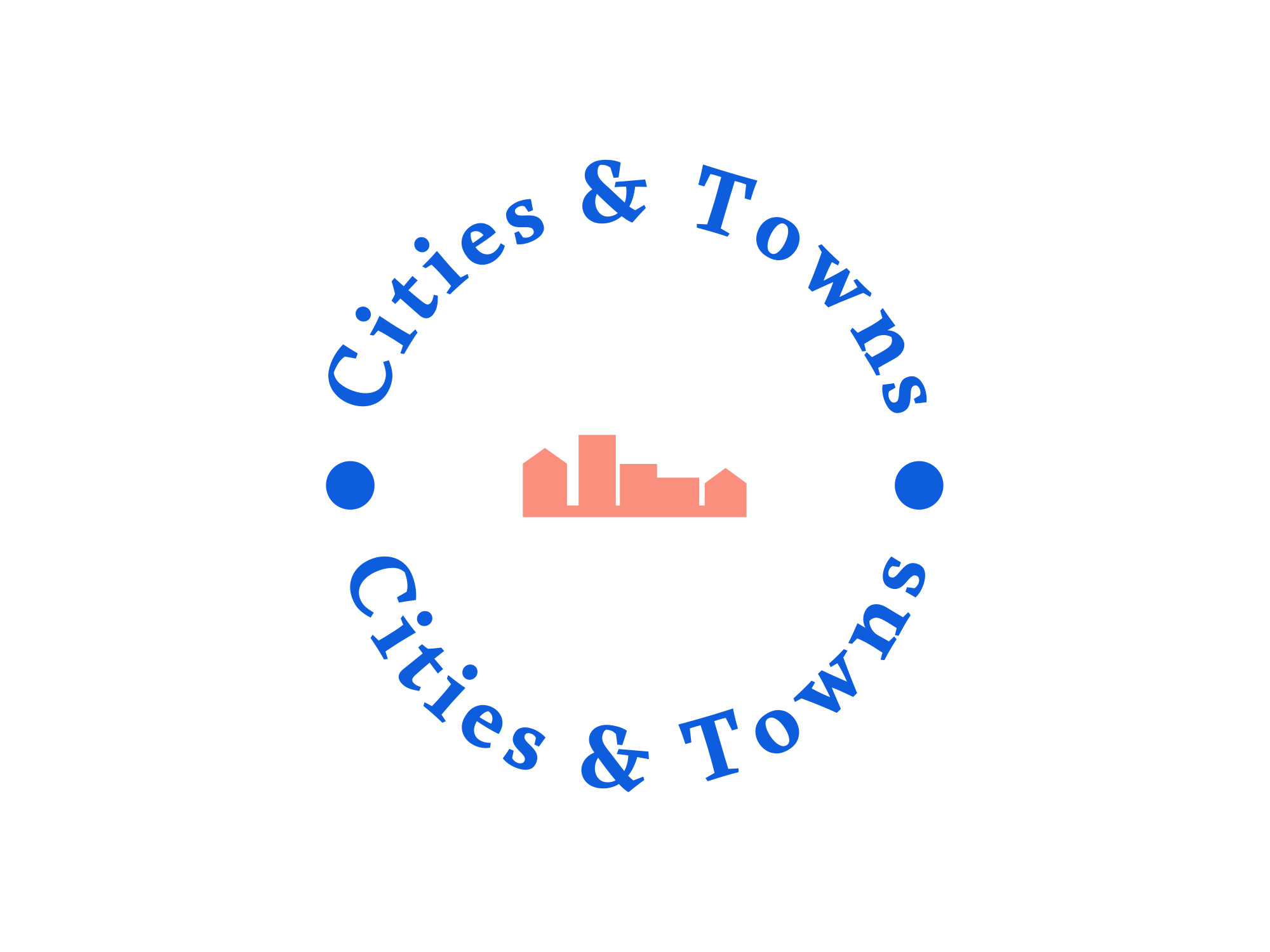
Cities and towns can change their building and fire codes which impact our membership working in the skilled trades.

Legislation passed on the state and county level can impact our members in many different ways.
For those reasons and more it is important we support the Committee of Political Education because we need to make sure our voice is heard when decisions are being made that affect our members.
EMPLOYMENT AT WILL
In the U.S., you can legally ‘be fired for any reason or no reason at all’—here’s why
Tech companies have been making headlines lately for laying off hundreds and even thousands of employees. Twitter was the first, cutting hundreds of staff members overnight on November 3, and Meta followed suit, announcing it would cut more than 11,000. At the end of November, DoorDash announced it would lay off 1,250.
While some workers impacted by these latest cuts could be protected by the federal WARN Act, under which those considered to be part of a mass layoff are owed a 60-day written notice and their regular pay and benefits through that time, some may not.
In fact, under the U.S.’s at-will employment system, workers have very few protections in place to both help them keep their jobs and to cushion the blow ― financially, emotionally ― should they lose them. The U.S. is one of the few countries in the world with such a system.
Here’s how at-will employment works, why it’s the de-facto system in America, and how other countries handle their workforce.
‘You can be fired for any reason or no reason at all’
Loosely defined, at-will employment “means that you can be fired for any reason or no reason at all,” says Najah Farley, senior staff attorney at the National Employment Law Project.
You can get fired “because the boss is having a bad day,” says Arick Fudali, partner and managing attorney of civil rights firm the Bloom Firm, as an example. “Because he’s in a bad mood. Because you didn’t laugh at his joke.” None of these would necessarily qualify as unlawful termination, unfair as they may seem.
“Likewise, you can quit for any reason,” he says.
Montana is the only state in the U.S. which is not technically at-will, and employers there need to have a “good cause” for termination, according to its department of labor. In 2021, however, changes were made to Montana’s Wrongful Discharge from Employment Act, giving employers more leeway in this area.
‘Your boss can’t be flirting with you and then fire you’
There are several exceptions under which employees can’t be fired. Here are four of the critical ones:
-
Discrimination: Your employer cannot terminate you for being part of a protected class. They cannot terminate you based on “race, color, religion, sex (including pregnancy, sexual orientation, or gender identity), national origin, age (40 or older), disability and genetic information (including family medical history),” according to the U.S. Equal Employment Opportunity Commission. Importantly, they also can’t fire you or let you go for complaining about discrimination that wasn’t directed at you.
-
Sexual harassment: Your employer can’t fire you or let you go for rebuffing or complaining about sexual harassment, whether it happened to you or someone else, even if that complaint turns out to be unfounded. “A boss can’t give you a quid pro quo offer of sex in exchange for your job and then fire you because you refused. Your boss can’t fire you because you’re being standoffish about the sexual harassment. Your boss can’t be flirting with you and then fire you because you didn’t respond,” says Fudali.
-
Whistleblowing: “You can’t be retaliated against for whistleblowing,” says Fudali, such as reporting violations of safety protocols in the workplace.
-
Union membership: Many workers who are part of a union are also an exception to the at-will employment system. “They bargain the contract and that puts them into just-cause employment,” says Farley. This means an employer has to have an explicit reason for firing or letting them go.
Severance is not mandated by law
Another component of the U.S.’s at-will employment system is that under its auspices, once an employee is terminated, their former employer does not owe them severance or any other like provisions.
“If you get to work at 9 and they fire you at 10, they’re supposed to pay you for your hour,” plus any additional hours worked that you put in before that, says Farley. But, for the most part, that’s all they legally owe you, no matter how long you’ve been there or what kind of contributions you’ve made.
Here are several instances in which a company would owe a former employee severance:
-
Under the WARN Act, those who are part of what’s categorized as either a mass layoff or a plant closing would be owed a written notice of termination 60 days ahead of it and a continuation of their pay and benefits package through that time, even if they no longer have to come into their workplace.
-
Members of some unions may also be entitled to a severance package, depending on what that union has negotiated with the employer.
-
Some individual contracts may also stipulate severance. “If your contract says, ‘if you’re fired within the first six months, you get this amount of money,’ you get that amount of money,” says Fudali. Often higher level executives have such contracts.
The Bitter Truth About ‘Employment At Will’
Forbes Magazine
I was shocked as a young HR person to learn that in the USA, an employer can fire an employee for no reason at all.
“Since employees can leave a job at any time, therefore employers should be able to say ‘See ya!’ to individual employees at any time, too,” I heard repeated over and over at HR training sessions. I was horrified.
How could we expect to get an employee’s full focus on his or her work when the employment relationship that allows him or her to pay the bills and sleep at night is so tenuous – when the employee’s job could disappear at any moment?
I’ve been an HR person since the mid-eighties and I hate Employment at Will, which hurts employers even more than it hurts working people. Obviously if people are afraid of losing their jobs, they’re going to modify their behaviors and their speech.
They’re not going to take risks. They’re not going to say things they fear their manager doesn’t want to hear. That’s a shame for our businesses, our customers and our shareholders.
Anyone who hasn’t seen people behaving in a fake and less-than-forthcoming manner at work has not been paying attention.
No one can blame working people for zipping their lips when they really have something to say and when their organization could benefit from their honesty. They’re not stupid. They have bills to pay.
I’ve done it and you’ve probably done it, too – we’ve all stayed silent when the truth desperately needed to come out. Sometimes we may even have said “Yes, I love that idea, Boss!” when we actually hated the boss’s idea, which was idiotic and would never work.
Unfortunately, most large organizations and plenty of smaller ones hire employees for their brains, and then give them good reason to shut up and never tell the truth at work again.
If people see that telling the truth gets you shunned, demoted or fired, what do you think will happen to the level of honest communication flowing throughout your organization?
Any employer who wants to can set a higher bar than the one the US employment laws require.
US employment laws, of course, typically present no bar at all to terminating an employee (unless the employee is dismissed for a discriminatory reason and can prove it, or unless there’s an employment contract or a collective bargaining agreement in place).
Any employer can choose to rise above the Employment at Will standard and commit to their teammates and their culture at a higher level.
Any organization can show through its actions that its employees can speak up and disagree with anybody, including the CEO, and keep their jobs.
Any organization can do it, and thank goodness a few of them do – but many large organizations cling to their petty bureaucratic power to keep employees quiet and docile.
The threat of termination is more than enough to keep most working people quiet, even when it hurts their employer for them to stay silent.
Employers keep their teammates quiet against their own economic interest, because their leaders could make better decisions if they had more honest information from the front lines more quickly.
They’d get that honest information if they demonstrated that truth-tellers don’t get fired – they get acknowledged and thanked for their observation and insight, instead.
My old boss Casey used to tell me and my fellow managers “Report faithfully!”
He meant “I’m the CEO and I can’t be everywhere. You guys are my managers — our eyes and ears. Tell me what’s going on with our clients, our competitors, our employees, our shareholders and the people who apply for jobs with our company — anything I need to know. Tell me the truth — don’t sugarcoat anything!”
He wanted to know what he couldn’t see and hear with his own five senses. Every good CEO wants to know the same thing.
If you want your teammates to report faithfully from the front lines, you have to prove to them that you can handle the truth, no matter how gritty it might be.
If you can handle the truth your teammates bring you, your company will thrive.
If you can’t handle the truth you can kill the messenger, rest on the power of Employment at Will to turn off the Reality Channel and bask in your ignorance for a little while longer.
‘Disposable Employees’: Why More Workers Feel Replaceable Before Their Bodies Are Cold
No employee wants to feel like a number that can be easily replaced. But as the divide between employers and employees widens, worker loyalty is rapidly fading. When I turned to Gloria St. Martin-Lowry for answers, she told me, “They’d replace you before your body’s cold.” The president of HPWP Group asked, “How’d we get so disposable?” She went on to share the story of a Google software engineer who dedicated twenty years of his life to the company only to be laid off by email with no personal goodbye. And she says there are hundreds of similar stories.
Why Employers don’t like Unions? Myths and Facts
What is the Purpose of the Union?
1. Main purpose:
Corporations are powerful and have control over almost everything.
Thus against such a supremacy, what can an individual do by himself?
It acts as a medium of communication among the workers and the management. Thus unions seek to protect such individual employees.
2. Collective efforts:
The company can get rid of an employee and replace that person. If the company is amoral then that company may search for an individual that will do the work at the cheapest rate.
If employees join a union, then they do not come as an individual but as group, which will help them to become powerful.
They can negotiate pay, terms and work conditions and if companies deny listening to them then together they can strike.
3. Protecting rights:
The unions were originally formed to protect the workers and their rights. The basic purpose of the union is to protect the rights of the employees and to ensure that matters such as salaries, working hours, and contracts are reserved at a fair level.
Companies are forced to abide by their wishes as the unions have the power to go on strike and completely bring down a company to get their way out.
Why Employees Join the Union?
1. Job security:
Every employee has a necessity to have a sense of job security. They want to be sure that the management of their company will not be making unfair and uninformed decisions, concerning their employment.
So they look for unions, to guarantee that their jobs are protected from layoffs etc.
2. Pay and benefits:
Employees work to earn for their livelihood. It becomes their bread and butter which is an important issue for their joining in the unions.
The employees think that the union, with the help of its united power, can guarantee fair salaries with equivalence to their other coworkers, medical facility benefits, pensions, vacations and holidays and paid sick leave.
3. Working conditions:
A healthy and safe environment is an ideal place to work for employees. Even though there are legislative provisions for providing the employees with a safe work environment, they still believe it is more secure to know that the union is directly engaged in the safety and health concerns associated with them.
4. Fair supervision:
The unions have brought a democratic leadership style, in which the management have turned people-oriented, wherein the managers are expected to treat their workers fairly and respectfully. Employees can be disciplined for only specific and impartial cause.
5. Mistreatment from employers:
If there is any case of mistreatment from the managers, the employee can file a written complaint against them.
It will be heard and by a formal grievance process with collective discussion by union and management representatives, will be resolved.
6. Helplessness:
Individually an employee may feel powerless and unvoiced to cause changes that will be advantageous to them.
So there is a union that grants them with power and united voice which will help them to communicate to the management about their dissatisfaction and disappointments. It is based on the labour idea of ‘unity is strength’.
7. The need to belong:
Man needs to belong in both his personal and work life. Keeping this idea in mind, the union provides a system for getting the people together.
This is not just to promote common job-related welfare but even to arrange programs and social events regularly to generate robust bond amongst the members of the union.
8. Sense of participation:
The employees will be able to participate in the management of matters that is affecting their interests and benefits by joining unions.
They will be able to influence the decisions which are the results of collective discussion among the union and the management.
9. Dais for self-expression:
The essential human drive is the desire for self-expression. We wish to share all our opinions, ideas and feelings. This goes the same for employees who wish that their management can listen to them.
Union provides a forum for them where they can place their feelings and opinions, even complaints and the collective voice of the union will be heard by the management and given careful consideration while the management settles upon various policies.
.
THE FACT IS:
Elected officials create and change laws. They also appoint judges who have the power to change the law. These elected officials belong to political parties and those parties raise money from individuals, organizations, interest groups, businesses and large corporations… If labor unions are not involved in politics they will not have a voice or any influence on what the government does.
Labor Laws were passed out of a need and those laws are under attack today.
CHILD LABOR LAWS
Industrialization
and
Child Labor in New York
Children in America worked long before the Industrial Revolution. While industrialization did not create child labor, it did change the nature and places in which children worked, especially after the Civil War. More children began working outside the family home or farm, under circumstances that were harmful to their development, if not downright hazardous to their health and safety. Beginning in the 1890s, progressive reformers and labor leaders began drawing attention to the circumstances under which children worked and pressing for laws to eliminate child labor.
Following the disastrous Triangle shirtwaist factory fire in 1911, the New York State Legislature created the Factory Investigating Commission to study the conditions under which workers of all ages labored. Investigators discovered families, including children as young as five, engaged in manufacturing tasks under horrific conditions in their own tenement apartments. The commission sponsored changes in state law to prohibit children under fourteen from being employed at factory work in any location, including tenement houses. Yet, as their progressive forebears had learned and their New Deal successors would soon discover, support for regulation of child labor was far from unanimous. State and federal child labor laws were struck down as unconstitutional and a federal Child Labor Amendment failed to gain adequate support among the states. For some parents, regulation infringed upon their right to run their own households and decide what was best for their own children.
Still, great progress was made in reducing child labor through state laws and under the short-lived National Recovery Act of 1933. Federal regulation of child labor became permanent in 1941 when the United States Supreme Court upheld the 1938 Fair Labor Standards Act. Nevertheless, child labor endures even today in certain economic sectors and within specific cultural groups.
Were There Child Labor Laws During the Industrial Revolution?
So, what laws existed to protect the rights of these child workers? Few to none. These new factories were subject to very few workers’ rights and workplace safety regulations. In particular, there were no substantive laws related to child labor. Children as young as six years old could be found on the assembly lines and in mines. Often, children worked up to eighteen hours a day, six days a week.
Because they were much smaller than the average adult worker, child workers were frequently tasked with highly hazardous work, such as wriggling their hands or bodies into tightly fitted machinery. They received little pay for their work. Furthermore, their young age made them less inclined and less able to organize unions to advocate for their collective rights and protest their deplorable working conditions. These child labor practices persisted beyond the Industrial Revolution well into the 1900s.
What are the child labor laws in the United States?
The Fair Labor Standards Act of 1938 is the basis for current U.S. child labor legislation. This act prohibits the employment of any children under the age of 14, with some exceptions. Children from ages 14 to 16 are allowed to work 18 weekly hours during the school year and 40 weekly hours during school vacations. Children under the age of 18 are not permitted to work in hazardous conditions such as mining or manufacturing.
Can a 14-year-old work in the United States?
Yes, 14-year-olds can work in the United States. 14 and 15-year-olds are only permitted to work a certain number of hours and are not permitted to work in hazardous positions such as mining or manufacturing.
Child labor laws are under attack in states across the country
Amid increasing child labor violations, lawmakers must act to strengthen standards
What this report finds: States across the country are attempting to weaken child labor protections, just as violations of these standards are rising. This report identifies bills weakening child labor standards in 10 states that have been introduced or passed in the past two years alone. It provides background on child labor standards and the coordinated push to weaken them, discusses the context in which these laws are being changed, and explains the connection between child labor and the United States’ broken immigration system. It also provides data showing that declines in labor force participation among young adults reflect decisions to obtain more education in order to increase their long-term employability and earnings, and that nearly all youth currently seeking work report being able to find it.
Why it matters: Federal laws providing minimum protections for child labor were enacted nearly a century ago, leading many to assume that children working in grueling and/or dangerous jobs was a thing of the past. In fact, violations of child labor laws are on the rise, as are attempts by state lawmakers to weaken the standards that protect children in the workplace.
What lawmakers can do about it: This report provides policy recommendations for lawmakers at both the federal and state levels. At the federal level, Congress should heed calls to increase penalties for child labor violations and address chronic underfunding of agencies that enforce labor standards, eliminate occupational carve-outs that allow for weaker standards in agricultural employment, pass the Protecting the Right to Organize (PRO) Act, and implement immigration reforms that curb the exploitation of unauthorized immigrants and unaccompanied migrant youth. At the state level, lawmakers should eliminate subminimum wages for youth and raise the minimum wage, eliminate the two-tiered system that fails to protect children from hazardous or excessive work in agriculture, strengthen labor standards enforcement, and empower young people to build and strengthen unions.
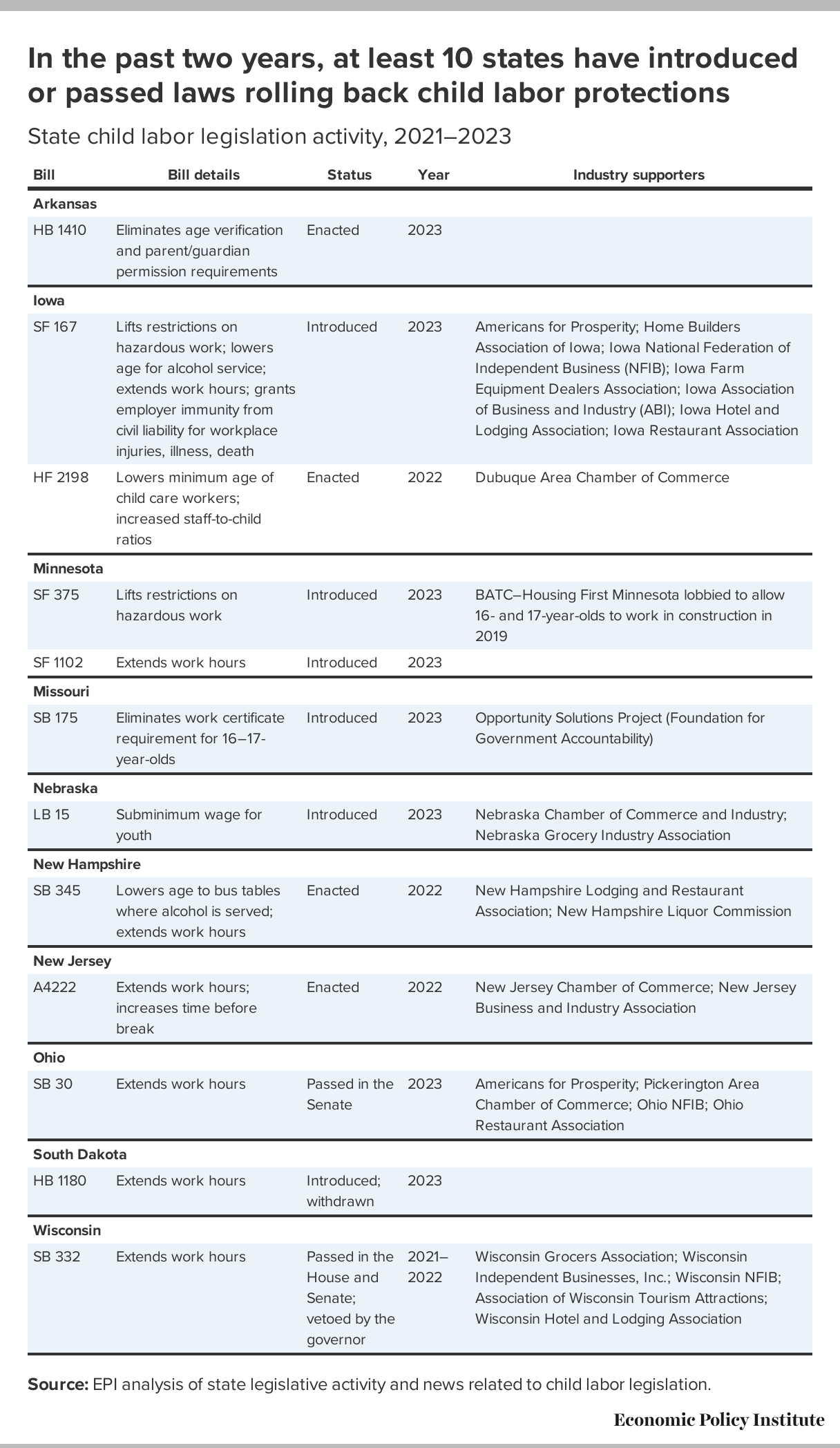
Workplace Safety
Death by Inequality
How workers’ lack of power harms their health and safety
Structural limits on OSHA enforcement
In the context of the federal government, OSHA is a tiny agency. It has a total staff of about 2,000 at the best of times, of whom fewer than half are assigned to inspect workplaces.48 The number of inspectors—referred to as compliance safety and health officers, or CSHOs—has fluctuated over the decades, reaching highs of more than 1,400 in the late 1970s, remaining around 1,000 most of the time, and declining significantly over the last few years. OSHA began 2020 with 862 CSHOs, the lowest number in its history. At the same time, the number of workers OSHA is expected to protect has continued to grow with the economy, and employment has doubled between 1970 and 2019;49 there are now twice as many workers as there were in the early 1970s. This means that, even when OSHA has the political will to engage in robust enforcement, there will always be practical limits on how many workplaces it can affect directly.
The arduous task of creating or updating OSHA standards
As noted above, a significant contributor to OSHA’s failure to achieve its potential has been its inability to promulgate new and updated safety and health standards. This inability is most pronounced in the case of standards intended to protect against occupational diseases caused by chemical exposure, which kill up to 100,000 American workers and retirees every year, a number that dwarfs the 5,000-6,000 who die in accidents (Takala 2014). The substances workers are exposed to include such well-known hazards as asbestos, lead, and silica, as well as less recognized chemicals such as bisphenol A (BPA) and isocyanates. There is a huge disparity of knowledge about these hazards between workers and employers, with workers much less likely to realize that their exposures are dangerous. But industry knows about the hazards of the chemicals it uses, and it often tries to keep this knowledge from its employees.
Death on the Job
The Toll of Neglect
States with the highest fatality rates in 2021 were:
- Wyoming (10.4 per 100,000 workers)
- North Dakota (9.0 per 100,000 workers)
- Montana (8.0 per 100,000 workers)
- Louisiana (7.7 per 100,000 workers)
- Alaska (6.2 per 100,000 workers)
- New Mexico (6.2 per 100,000 workers)
The State of Workers’ Safety and Health 2023
This 2023 edition of “Death on the Job: The Toll of Neglect” marks the 32nd year the AFL-CIO has produced a report on the state of safety and health protections for America’s workers. This report features national and state information on workplace fatalities, injuries and illnesses, as well as workplace safety inspections, penalties, funding, staffing and public employee coverage under the Occupational Safety and Health Act. It also includes information on the state of mine safety and health, and key topics such as COVID-19, workplace violence, musculoskeletal disorders and heat illness prevention.

‘Right to Work’ Makes Workplaces More Dangerous
“Right to work” laws make it easier for CEOs to cut back on health and safety protections for workers, increasing the burdens on working families.
Workers in right to work states also have lower wages and income, lower rates of health insurance coverage and higher poverty and infant mortality rates, and invest less in education.
Without workers standing together in union to oversee safety at the workplace, enforcement of safety and health laws will be weaker and workplaces will become more dangerous.
Right to Work Would Increase Job Fatalities and Injuries.
In 2019, 5,333 workers died on the job and millions of workers were seriously injured. Health care workers in hospitals and nursing homes who care for patients and the elderly suffer high rates of injury, as do warehouse workers and public employees like police and firefighters.
Workers in right to work states are in greater danger than other workers in the United States. Workers in states with right to work laws have a 37% higher risk of dying on the job than workers in states without these laws.
Right to Work Would Weaken Enforcement of Critical Safety and Health Protections.
Working people standing together in union ensure enforcement of safety standards that reduce workplace deaths and injuries, but right to work will weaken their ability to see that employers follow job safety laws.
Unions negotiate for safety standards and rights that are stronger than OSHA’s, and enforce these protections through their collective bargaining agreements.
Union contracts protect workers from retaliation for raising job safety concerns, and give workers the right to refuse unsafe work that poses danger to them and their co-workers. Unions provide training and education to workers about safety and health hazards.
And through workplace safety and health committees, union members help to identify hazardous conditions and work to get them corrected. It is well documented that union workplaces have much stronger enforcement of job safety laws than nonunion workplaces.
Unions help ensure safe and healthy working conditions for public employees.
Under current law, public employees in 24 states are afforded no safety and health coverage under OSHA, which makes unions even more vital in ensuring health and safety protections for workers.
More than 8 million public employees in the United States, including police, firefighters and health care workers, lack OSHA safety and health coverage on the job.
Union workplaces are safer than nonunion workplaces.
States with high union density are among the safest: 16 states rank in the top 20 in both union density and lowest rates of workplace fatalities.
States with higher union densities have significantly lower rates of construction fatalities. In the mining industry, unionized mines have made much greater progress in reducing serious injuries and fatalities than nonunion mines, and have lower rates of traumatic injuries and fatalities. This in-depth study of mine safety data found that the presence of a union was responsible for a 14% to 32% drop in traumatic injuries, and a 29% to 84% drop in fatalities from 1993–2010.
Government enforcement of job safety laws already is too weak.
There were only 1,767 inspectors in FY 2019 to inspect more than 9.9 million workplaces in the United States.
This leaves one inspector for every 83,207 workers, and gives OSHA the ability to inspect workplaces, on average, only once every 107 years.
Penalties for job safety and health violations are low. In FY 2019, the average federal penalty for a serious safety violation was only $3,717. The median federal penalty for killing a worker was only $9,282, too low to deter future violations and prevent injuries and deaths.
Right to work weakens working people’s freedom to join together in union, weakens safety enforcement and makes workplaces more dangerous.
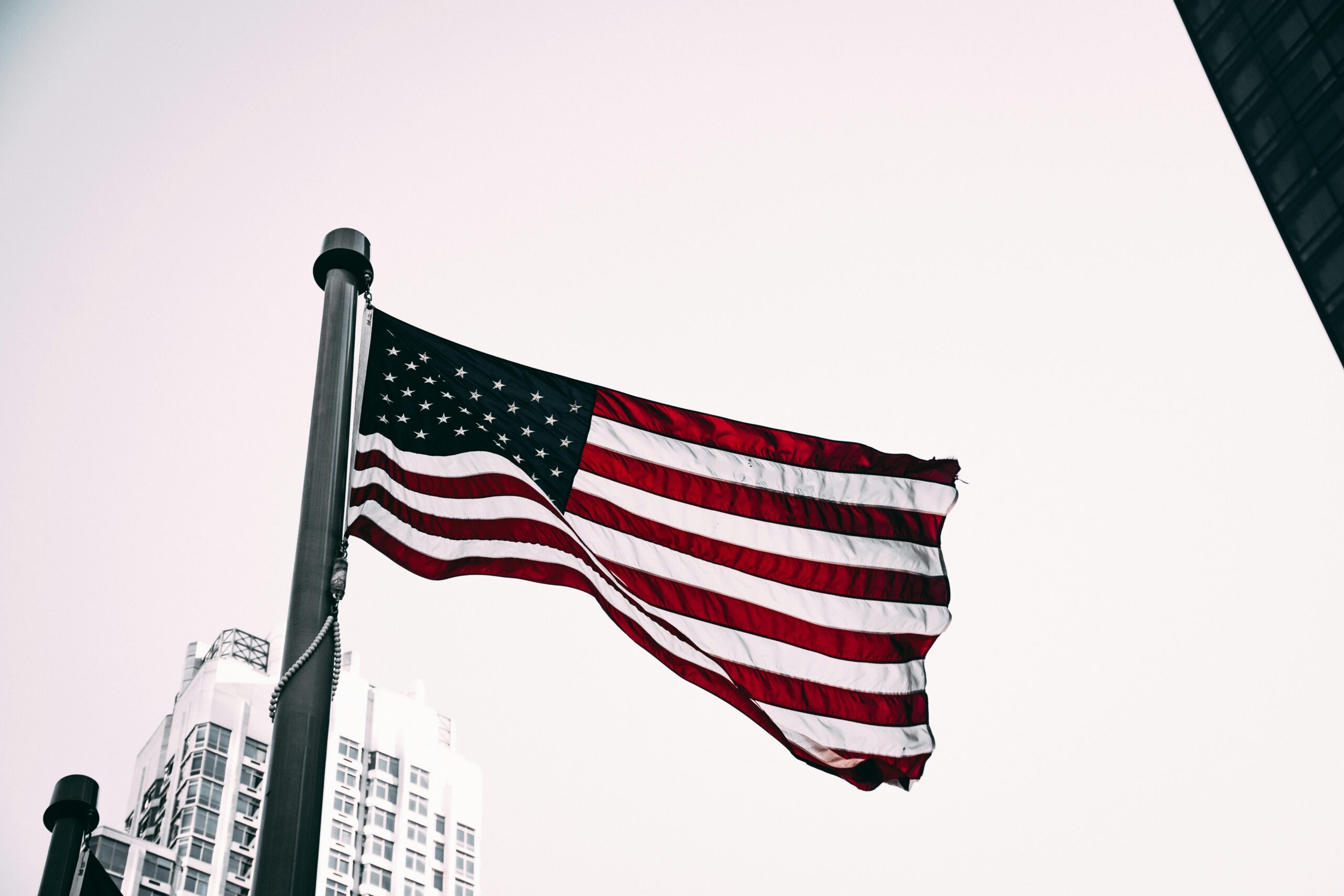
ELECTED GOVERNMENT OFFICIALS PASS LAWS THAT HURT LABOR UNIONS. PRESIDENTS, GOVERNORS AND MAYORS MAKE APPOINTMENTS THAT HURT LABOR UNIONS.
HOW CAN UNIONS SURVIVE IF THEY ARE NOT INVOLVED IN POLITICAL ACTION?


THE JANUS DECISION IS A LONG TERM PROBLEM WITH NO EASY FIX
We can also look at membership and financial forms unions submit to the federal government. Artz is the general counsel for AFSCME, which must, by law, submit an LM-2 form each year. Schedule 13 shows the number of dues and fee payers for the union.
From 2017 (the last report filed before the Janus decision) to 2022, AFSCME has lost more than 200,000 dues-paying members and fee-payers. Every active membership category has declined. In total, this is a 16.3% drop in active workers contributing to the union. This sure looks like a “significant dent.”
The results are clear on their face.
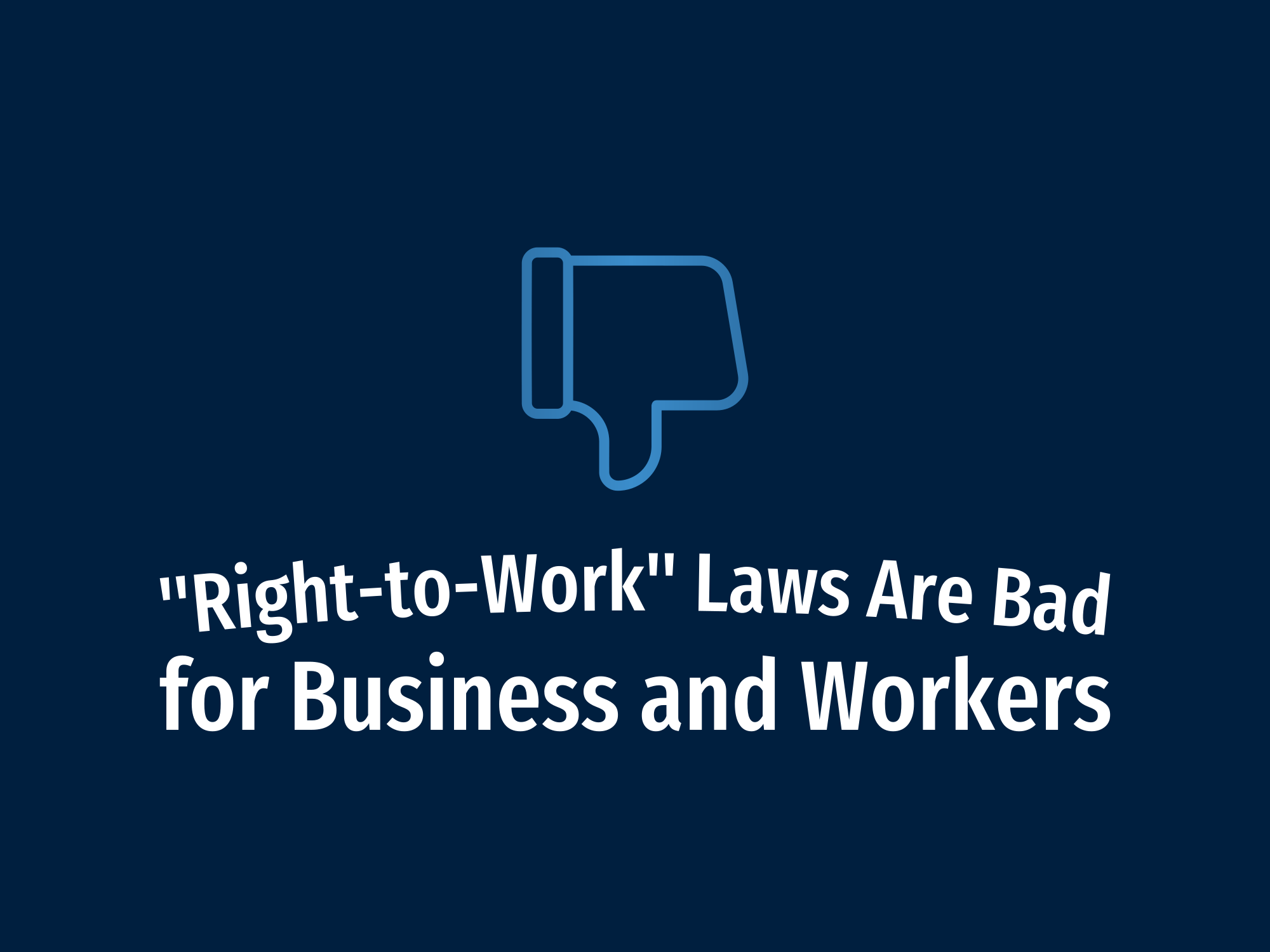

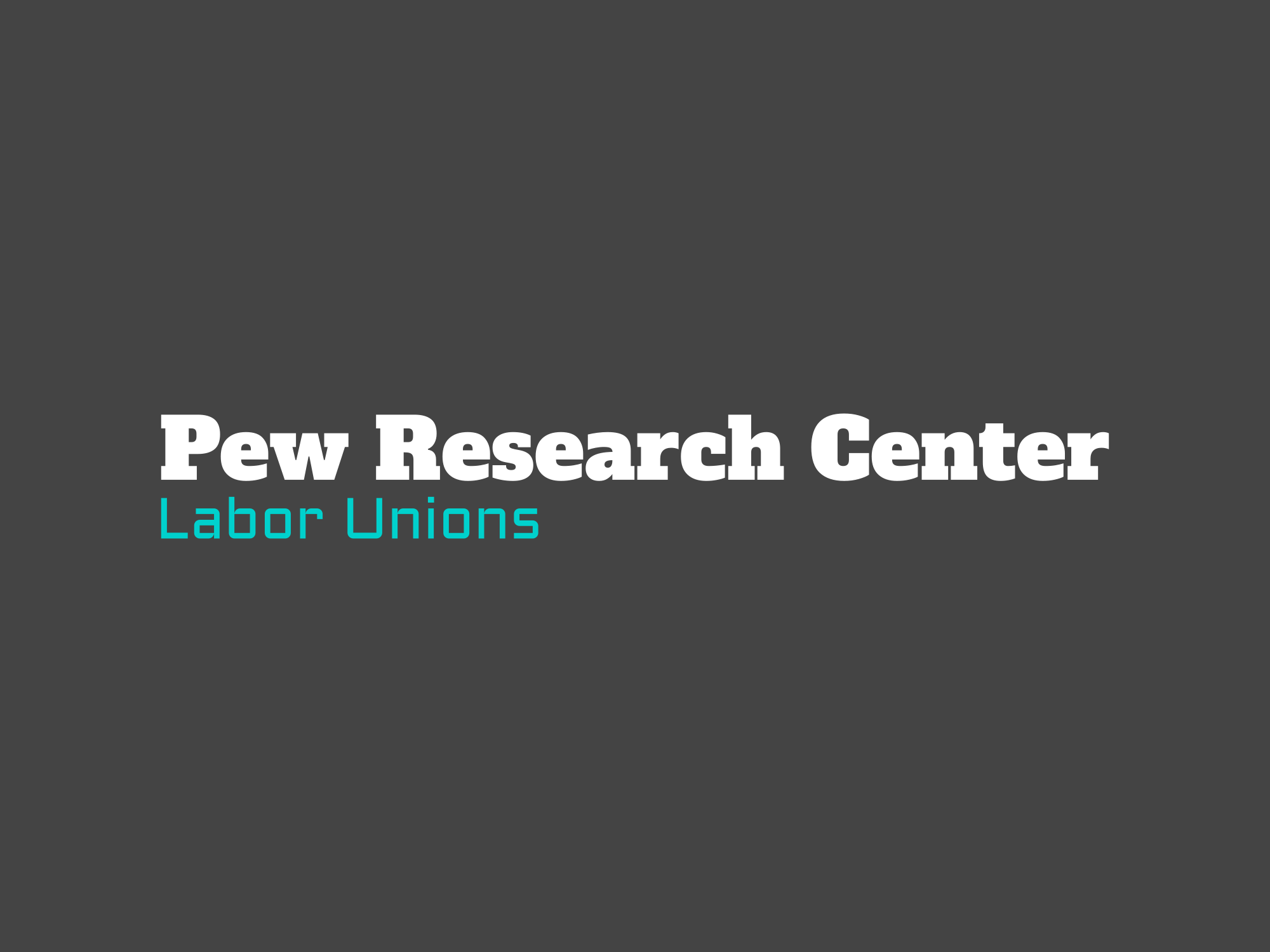
There are sharp partisan divisions in views of labor unions. Overall, 55% of Americans say labor unions positively affect the country, while 41% say they have a negative impact. These views are little changed in recent years.

By roughly three-to-one (75% positive to 23% negative), Democrats have a positive view of labor unions. Republicans are about half as likely as Democrats to view unions positively; 35% of Republicans say unions are having a positive impact, compared with 61% who view unions negatively.
Within each party, there are ideological differences in evaluations of labor unions. Liberal Democrats are 20 percentage points more likely than moderate and conservative Democrats to say unions are having a positive effect (86% vs. 66%). And moderate and liberal Republicans are 26 points more likely than conservative Republicans to say this (52% vs. 26%).
Union members
Union members (74%) are far more likely than those who do not belong to a union (53%) to view labor unions positively.
Last year, a majority of Americans (58%) said the long-term decline in union membership was a bad thing for the country. Union membership has fallen by roughly half over the last four decades. Currently, about one-in-ten adults (11%) report being members of a union.
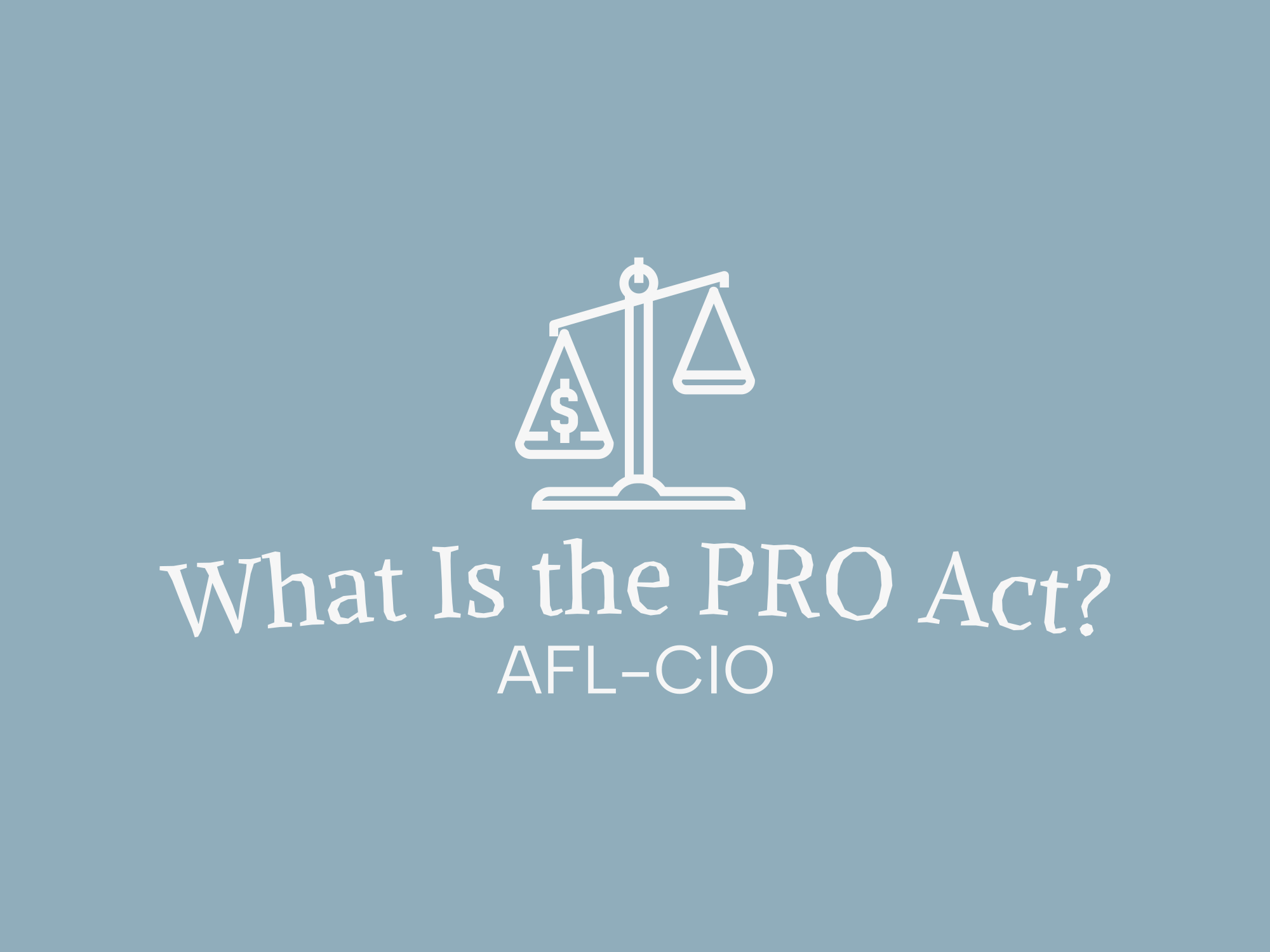
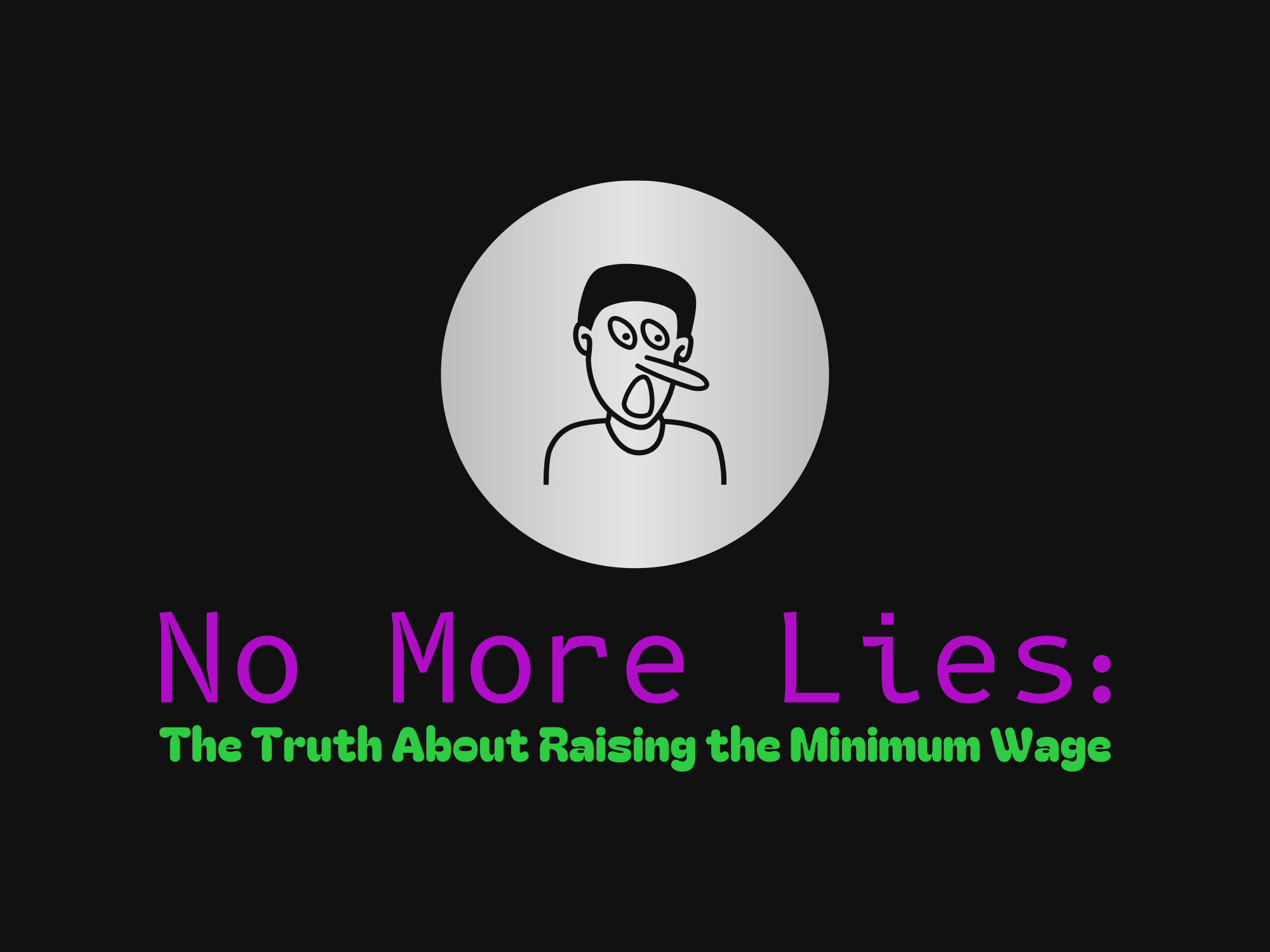
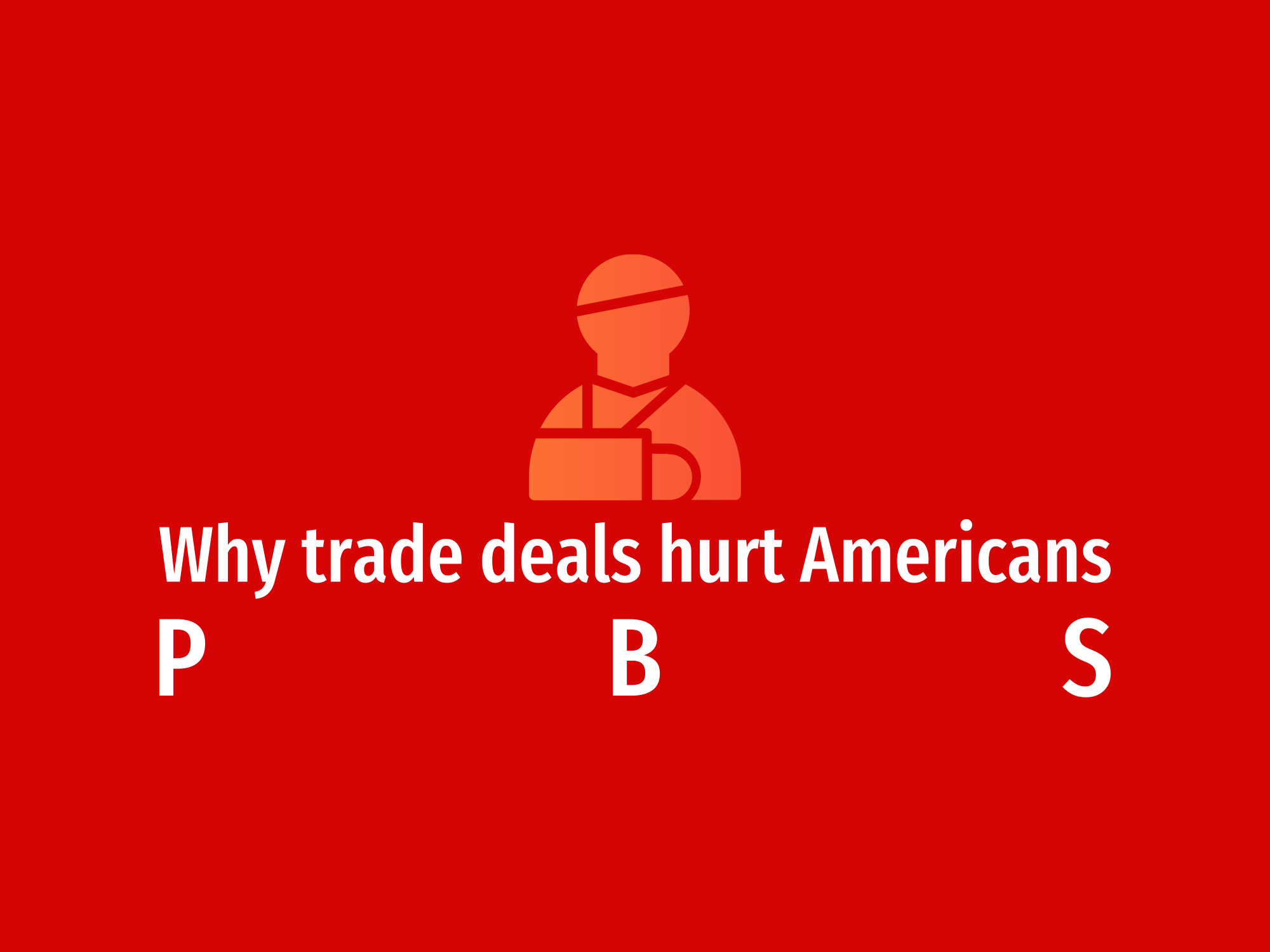
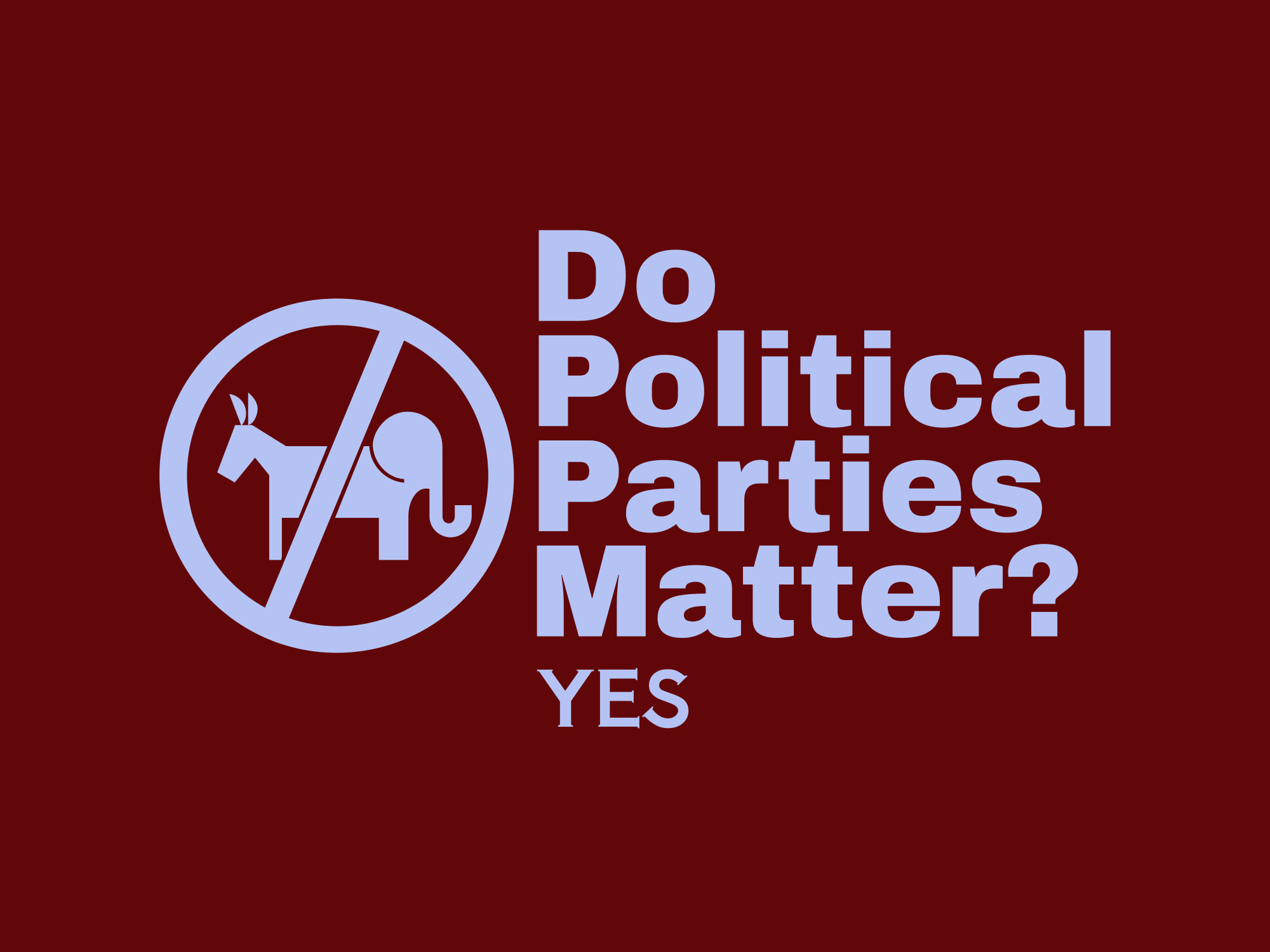
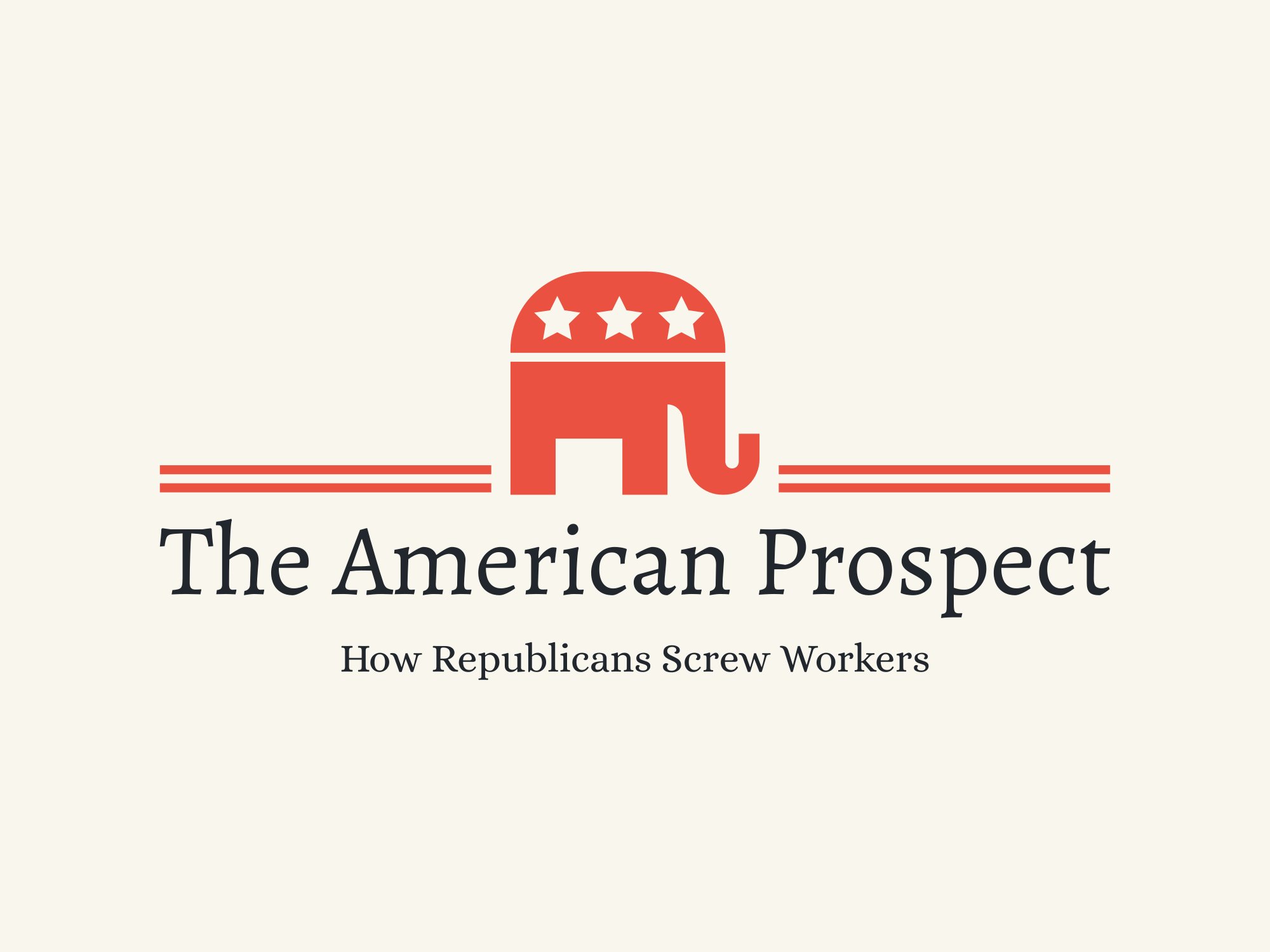
Efforts by Obama and Biden to enforce labor laws have been systematically undermined by right-wing courts and legislators. This should be a prime election theme.
In that case, Associated Builders and Contractors of Southeast Texas v. Rung, decided in October 2016, the judge enjoined enforcement of the rule on several grounds, including supposed violation of due process, administrative actions going beyond the intent of Congress, and even infringement on contractors’ free speech.
By the time the Obama administration considered whether to appeal, Trump had been elected and no appeal was possible. Then for good measure, the Republican Congress that came in with Trump acted under the Congressional Review Act to prohibit either Congress or a Democratic president from reviving the rule.
So even though every one of the underlying laws has long been found to be constitutional, a serious effort to enforce them has been stymied. The Biden administration has been doing its best to salvage some aspects of the enforcement plan, consistent with what the courts will allow.
For instance, for several decades, every federal agency that contracts with the private sector has had one or more career civil servants specializing in labor issues. Back when unions were more powerful, these labor contracting specialists focused on such issues as helping expedite contract work in the aftermath of strike settlements. Now, the job of these labor advisers has been repurposed to expedite sharing of information and enforcement actions against contractors who violate any of several labor laws.
And as the federal government attempts to underwrite rapid rebuilding of the Francis Scott Key Bridge (dependent on whether the Republican House allows it), a project that would require payment of good wages under the Davis-Bacon Act, the administration also plans to use this effort as a model of Davis-Bacon enforcement.
Biden also successfully sponsored well over a trillion dollars of new infrastructure spending via the Inflation Reduction Act, the bipartisan infrastructure law, and the CHIPS Act. Creation of good union jobs is a central objective.
Key to this effort is the Biden executive order on project labor agreements, which promote labor-management cooperation on large federally financed construction projects, including enforcement of Davis-Bacon. PLAs help carry out Biden’s pledge to create good union jobs.
But last week, the Florida branch of the contractors’ lobby filed suit to have the PLA order declared unconstitutional, on the same grounds that the Texas judge used to overturn Obama’s Fair Pay and Safe Workplaces rule. So it goes.
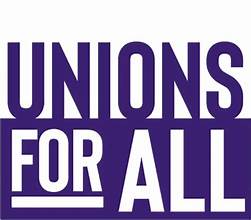
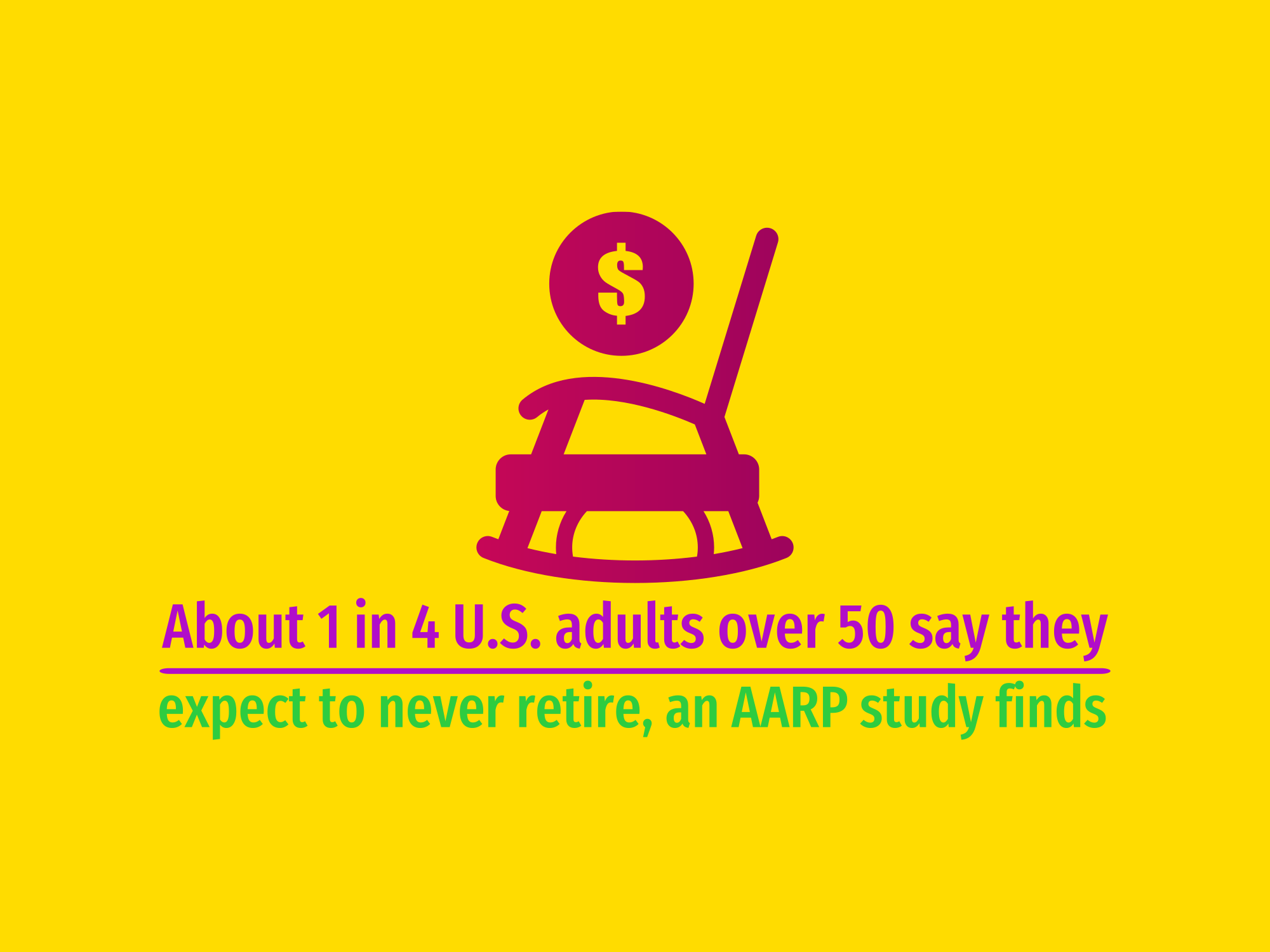

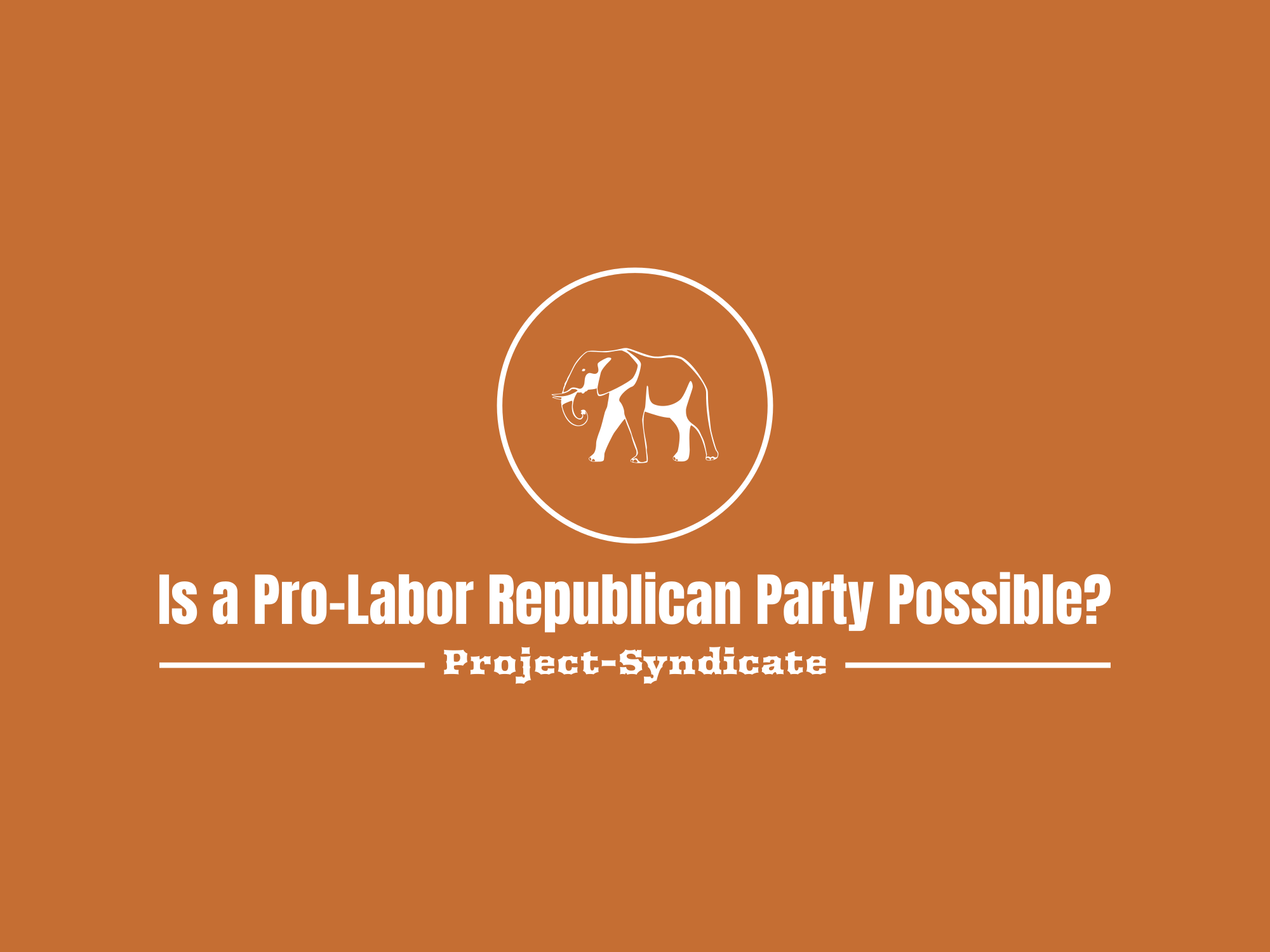
A reconciliation of Republicanism and workers’ interests is also conceivable on philosophical grounds. During the Reagan era, economists assumed that labor markets are inherently competitive, implying that unions must be cartels that push wages above the competitive rate, ultimately reducing production and harming consumers. By the same token, minimum-wage laws would necessarily lead to higher unemployment. As economists advocated labor-market deregulation, businesses turned the theory into orthodoxy, and Republicans (and eventually Democrats) vied for business support by promising to turn the new orthodoxy into policy
In practice, however, deregulation – along with other forces, such as globalization and advances in technology that favored scale economies – benefited large firms. Soon enough, just a few companies dominated a broad range of markets, which had two major implications. First, it meant that corporations were less innovative and productive than they would have been in competitive markets. Second, surpluses generated by economic activity accrued more to investors, and less to consumers and workers. As economic growth weakened, inequality widened, exemplified by the massive increase in the difference between workers’ and executives’ compensation
A flood of research in recent years has shown that labor markets are not so competitive after all. Workers cannot move seamlessly from job to job, because they face a variety of obstacles such as high search costs and the absence of competing employers who are hiring. And because workers cannot easily change jobs, employers gain by underpaying and under-employing them. In this world, unions do not necessarily reduce productivity (moreover, the evidence for such an effect was always exceedingly thin); minimum-wage laws can push up wages without reducing employment (as many studies show); and antitrust enforcement can restore competition to labor markets, leading to higher wages and productivity
In this respect, Trump is a Republican in the classic mold. His appointments to the National Labor Relations Board, the Department of Labor, and the Supreme Court all sided with corporations on every major issue, and his signature policy achievement as president was a corporate tax cut. The Silicon Valley and Wall Street billionaires flocking to his standard bet that he will support them, not labor. Contrary to MAGA ideologists, Trump is a nationalist and a plutocrat, not a populist, let alone a religious conservative. Whether and how Hawley will find support for his vision in a secularizing, money-mad country is the question of the day.
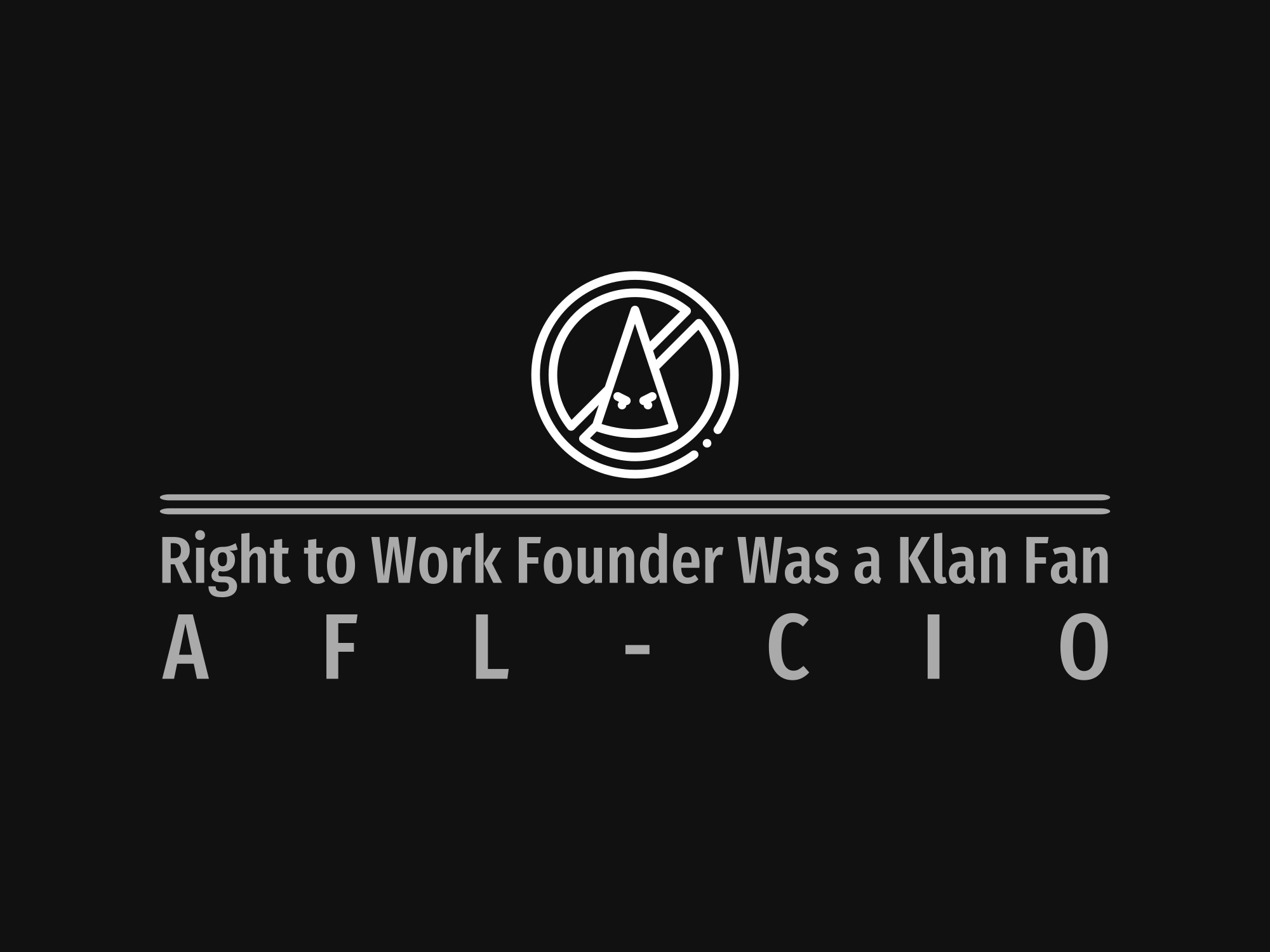
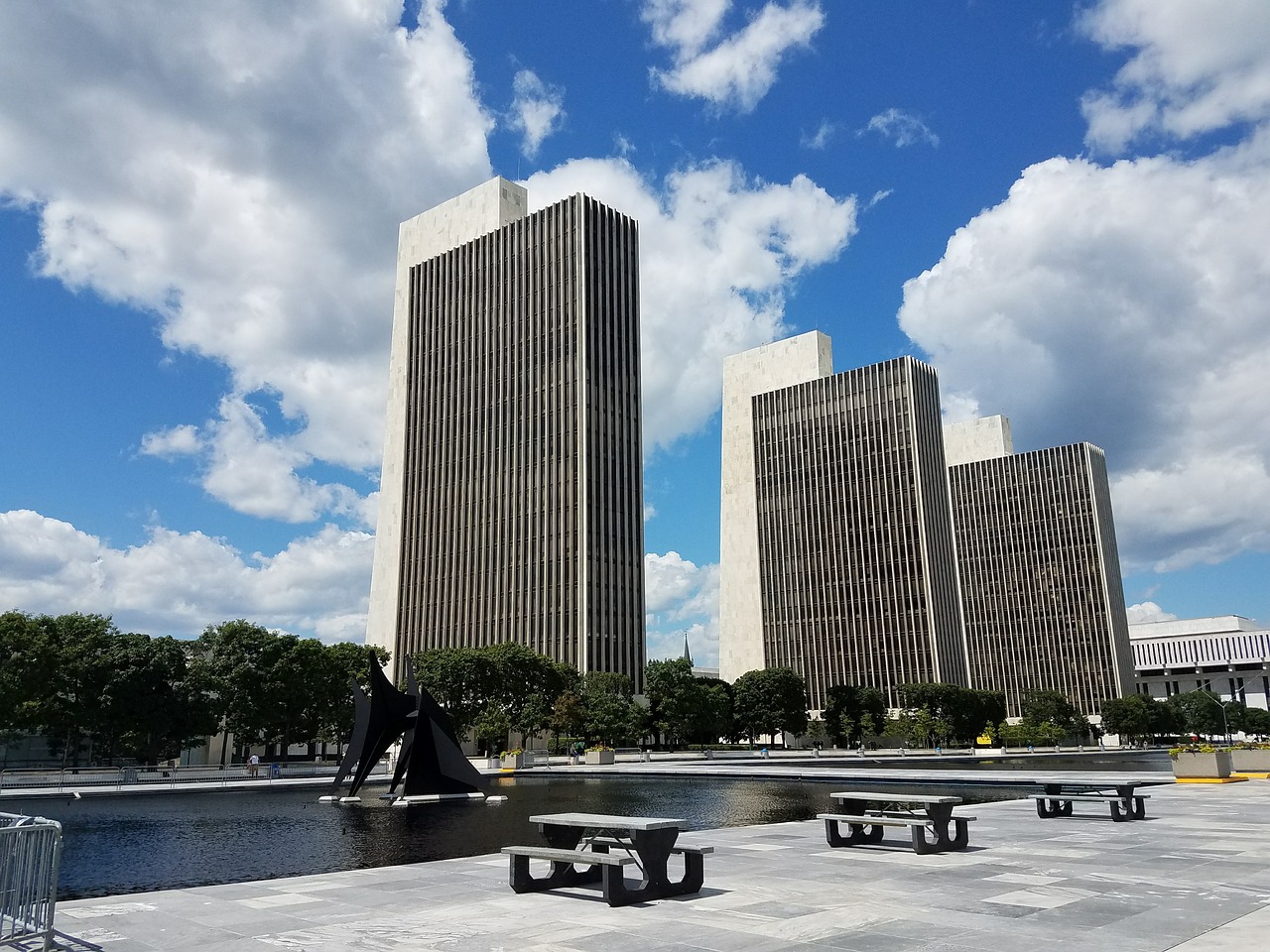
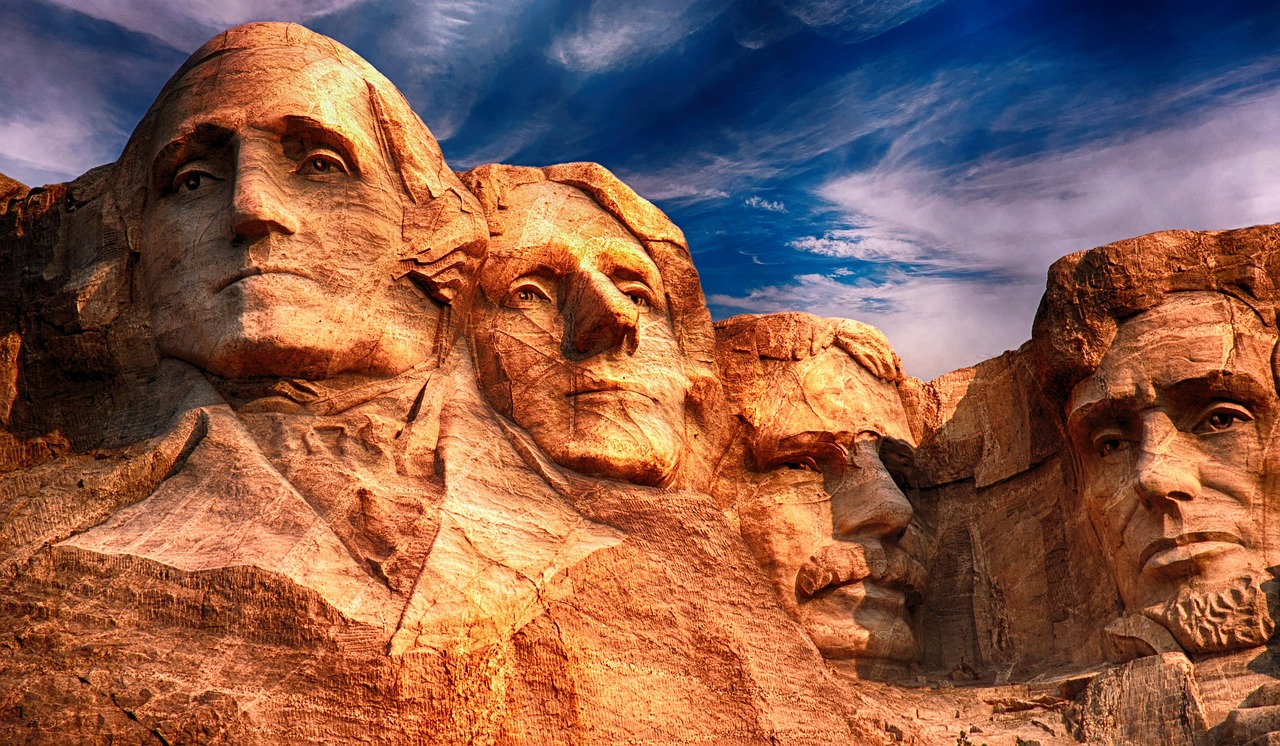

Stronger Together, Creating A Fairer World
National Politics Does Matter Too!
Majorities of Americans see the large reduction in the share of workers represented by unions over the past several decades as a bad thing for both the country and working people in the United States. The share of U.S. workers who belong to a union has fallen since 1983, when 20.1% of American workers were union members. In 2023, 10.0% of U.S. workers were in a union.

LAWS THAT HURT ORGANIZED LABOR ARE LAWS THAT HURT THE AMERICAN MIDDLE AND WORKING CLASS FAMILIES
United In Strength
Together For A Better Future
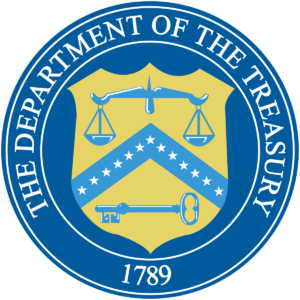
From the 1970s until recently, income inequality in the United States rose markedly, real median wages stagnated, and many measures of the strength of the middle class decreased. Over the same period, workers’ bargaining power diminished, a trend that can be seen in steadily declining union membership rates.
Traft Hartley, Right to Work Laws, Beck Rights and the Janus Decision have all weakened Labor Unions. Not surprising that as Union Density has shrunk so has the Middle Class.
Corporations & the Super Wealthy use the government to limit workers rights and hold down wages. Labor Unions & Working Class People need to be politically engaged as a matter of survival.
The United States’ Real
and Perceived Income Gap
Despite wealth disparity in the United States being a much-discussed topic over the past decades, the true size of the income gaps between the top 1% and the rest of the population is consistently perceived as smaller than it is. According to a YouGov survey from January 2022, U.S. Americans believe that ten percent of households in their country have an annual income of more than $1 million. As our chart shows, this couldn’t be further from the truth.
In reality, less than 0.5 percent earn that much per year when taking into consideration data from the IRS. The difference between perception and facts is even more pronounced when looking at households with an annual income of more than $500,000. While the median weighted responses from survey participants suggest that one-fifth of U.S. households belong to that bracket, it’s actually the oft-cited top 1%. On the other hand, U.S. Americans are overestimating the share of people having to scrape by with less than $25,000 per year. Instead of the perceived 35 percent who earn less than $25,000, the share stood at 18 percent in 2020.
When it comes to wealth instead of income, the survey participant’s perceptions hit closer to home. For example, roughly 22 million people in the U.S. had a net worth of more than $1 million in 2020, which amounts to about seven percent of the population of the United States. Out of the 130 million households in the U.S., 13.6 million were considered to have accumulated wealth of more than $1 million, excluding their primary residence, according to data from Spectrem Group. As of the third quarter of 2021, the top 1% held about 32 percent of all wealth in the United States, up nine percent from three decades prior.
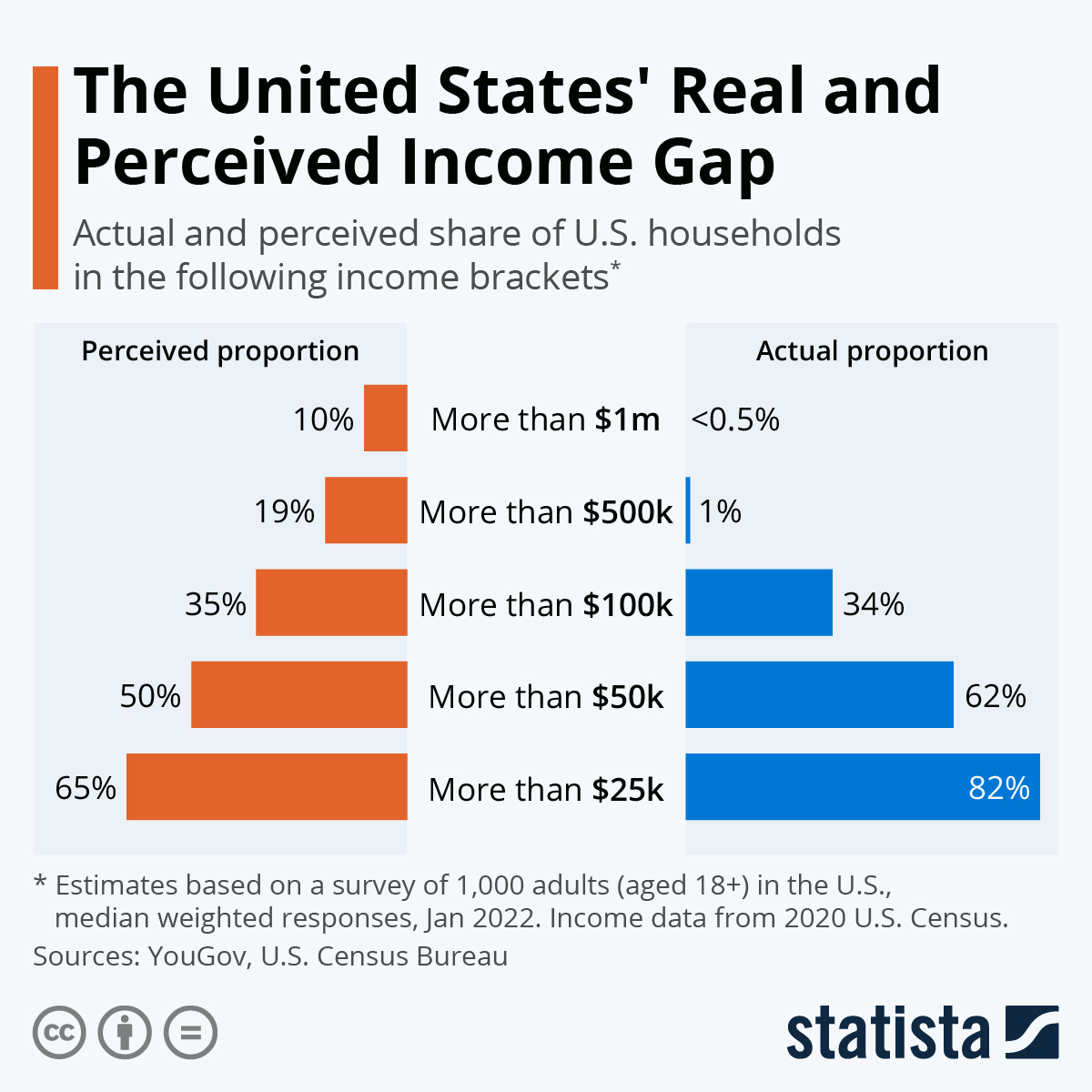
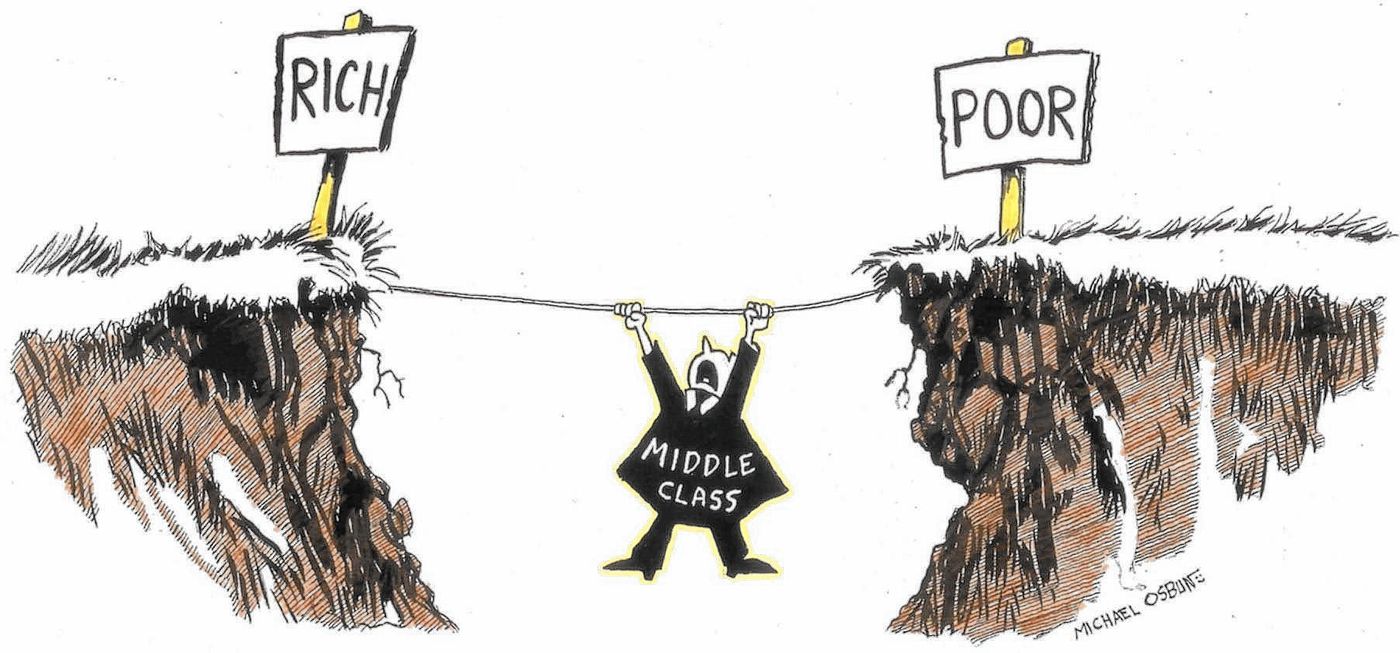
Stronger Workers
Stronger Communities
#Unions4ALL
50 Years Of Shrinking Union Membership, In One Map
Fifty years ago, nearly a third of U.S. workers belonged to a union. Today, it’s one in 10. But the decline has not been the same for every state. Here is a map showing how union membership has changed across the country.
A few notes on the map:
– In 1964, the Midwest was full of manufacturing jobs and had the highest concentration of union workers in America. That has changed dramatically — both because the share of jobs in manufacturing has fallen, and because fewer of the manufacturing jobs that remain are held by union workers.
– New York has the highest share of union workers in the country. The main story here is the public sector: 71 percent of government workers in New York state belong to unions. Nationwide, 36 percent of government employees are in unions, compared to just 7 percent of workers in the private sector.
– Alaska and Hawaii have the second and third highest rates of union membership. In Hawaii, union membership is particularly strong among hospitality workers; in Alaska, it’s strong in infrastructure jobs like road building. Also, government jobs make up a bigger share of the job markets in these two states than in some other parts of the country.
– Unions have never really been a thing in the South. Even in the ’60’s, the share of union workers was still only half of that in the Northeast, Midwest, and West. This is partly cultural. People here have long been less supportive of unions than people in other parts of the country. And in several Southern states, collective bargaining for key public sector employees is prohibited by law.
How Laws Shape the Workplace
‘Right to Work’ Laws:
Overview and State Guide
By Christie Nicholson, J.D. | Legally reviewed by Melissa Bender, Esq. | Last reviewed June 18, 2024 Legally Reviewed & Fact-Checked
There are many controversial issues surrounding labor laws in general—unions in particular. Some believe unions help improve working conditions and wages for everyone, while others think unions wield too much power and stifle economic growth.
Perspectives like these shape arguments regarding state right to work laws, which limit what unions and employers can require of workers in their state. Regardless of your position on unions and labor laws, it’s helpful to know what the right to work laws are where you live and in neighboring states.
Unions often represent all workers in a bargaining unit, regardless of whether they are union members or not. As a result, unions often try to persuade employers to sign contracts that require all workers to pay fees to the union as a condition of employment. Over half of the states have right to work laws which prohibit employers and labor organizations from requiring non-union employees to pay these fees. Many states’ right to work laws also include language states that unions and employers may not require membership in a labor organization as a condition of employment.
This article outlines what to know about right-to-work laws. You will also find a table at the end that summarizes right-to-work laws by state. States with right-to-work laws also link out to specific statutes.
Who Do ‘Right-to-Work’ Laws Protect?
Right-to-work laws protect non-union employees. The protection is available to workers who choose to maintain or accept a position in a union shop even though they are not in the union.
The government passed these laws because unions were charging non-union employees membership dues. They argued that non-union workers benefited from the work of union leaders.
Workers challenged this practice, arguing that they shouldn’t have to pay union dues if they aren’t in the union. Further, they specifically chose not to be in a union. The union leaders can’t unilaterally decide to charge these employees for services they expressly declined.
The Debate Over Right-to-Work Laws
People still debate the merits of right-to-work laws. Those favoring the right to work see the issue as a matter of personal choice and freedom. They argue that every worker should be able to choose to join a union or not.
Some even view it through a constitutional lens. These people believe that all workers are free to associate (or not associate) with a union. They also have the freedom to choose whether to pay union dues.
Those opposed to right-to-work laws see them as anti-union. Because federal law already prohibits compulsory union membership, some argue that state right-to-work legislation serves no other purpose than to harm unions.
Opponents argue that right-to-work laws weaken unions’ bargaining strength, lowering workers’ wages and benefits. Some feel it’s unfair that these laws allow employees to benefit from unions without contributing to the unions’ expenses.
Right-to-Work Laws Don’t Prevent Your Employer From Firing You
Right-to-work laws protect you from having to pay union dues. It doesn’t prevent your employer from firing you. More than 75% of Americans are at-will employment states.
Companies can terminate at-will employees for any reason and at any time.
If your employer wants to fire you because you’re demanding they enforce the local right-to-work laws, they will find a way to fire you. If this happens, you have the option of filing a wrongful termination lawsuit. If you decide to pursue this, you’ll want to consult an employment attorney.
State and Federal Right-to-Work Laws
The U.S. Supreme Court has long held that employees don’t have to join a union to obtain or keep a job covered by a collective bargaining agreement. People commonly refer to these jobs as “union jobs.”
According to the Supreme Court, a union can’t force an employee to pay the union dues required for union membership. But these court decisions have provided that unions could require that all employees pay an “agency fee” or “fair share” payment.
These payments represent the portion of union dues that represents the union’s costs of collective bargaining, contract administration, and grievance handling. For most unions, agency fees are less than the full union dues. But these fees aren’t always significantly lower.
Because of this less-than-satisfactory solution, more than half of state laws support employees’ right-to-work laws. Under these laws, companies and union leaders can’t force an employee to join a union or pay union dues and agency fees to obtain or hold a job with a union employer.
While the specifics of these laws vary from state to state, all states offer remedies for violations. These remedies may include:
Civil enforcement
Money damages
Injunctive relief (a court-ordered remedy requiring a party to do or refrain from specific acts to prevent harm or resolve a legal dispute)
Some statutes even provide for criminal penalties.
In a 2018 Supreme Court case, Janus v. AFSCME, the Court held that employers and unions can’t force a public employee to be a union member. The Court also agreed that non-union workers don’t have to pay union dues or agency fees as a condition of employment.
This decision, which applies to all federal, state, and local government employees, effectively made every state a right-to-work state. But these cases only apply to the public sector.
Regardless of where an employee’s rights come from, they must notify the union that they wish to be free from union membership, dues, and agency fees. The union bears the responsibility of complying with the employee’s decision.
If a union leader or employer requires you to join a union or pay union dues, contact an employment law attorney immediately. These dues can get expensive. The more time that goes by, the harder it’ll be for you to recover your money.
The Basics of Union Representation
Under existing law, employees, as a group, can choose to have a union represent them in their relationship with their employer. Such representation often leads to a collective bargaining agreement spelling out the terms and conditions of that employment.
In return for its services, the union seeks dues from the employees covered by the agreement. Before right-to-work laws, unions would demand payment from non-union employees because they enjoyed the benefits of new labor agreements.
Some of the issues a union representative negotiates on behalf of employees include the following:
Wages
Benefits
Hours
Overtime
Health benefits
Tuition reimbursement
Legal representation
Other working conditions
One problem with having a union negotiating these issues is that there are frequently employees covered by the agreement who don’t want to belong to the union or pay union dues.
The interests of these employees have led to the development of so-called right-to-work laws.
State legislatures in Arizona and Florida passed the first right-to-work laws in 1944. Arizona and Nebraska followed suit just two years later. The timeline of when the other states passed these laws is as follows:
1947 – Virginia, Tennessee, North Carolina, Georgia, Iowa, South Dakota, Texas
1948 – North Dakota
1952 – Nevada
1953 – Alabama
1954 – Mississippi, South Carolina
1955 – Utah
1958 – Kansas
1963 – Wyoming
1976 – Louisiana
1985 – Idaho
2001 – Oklahoma
2012 – Indiana
2013 – Michigan (Repealed 2024)
2015 – Wisconsin
2016 – West Virginia
Who is President Matters
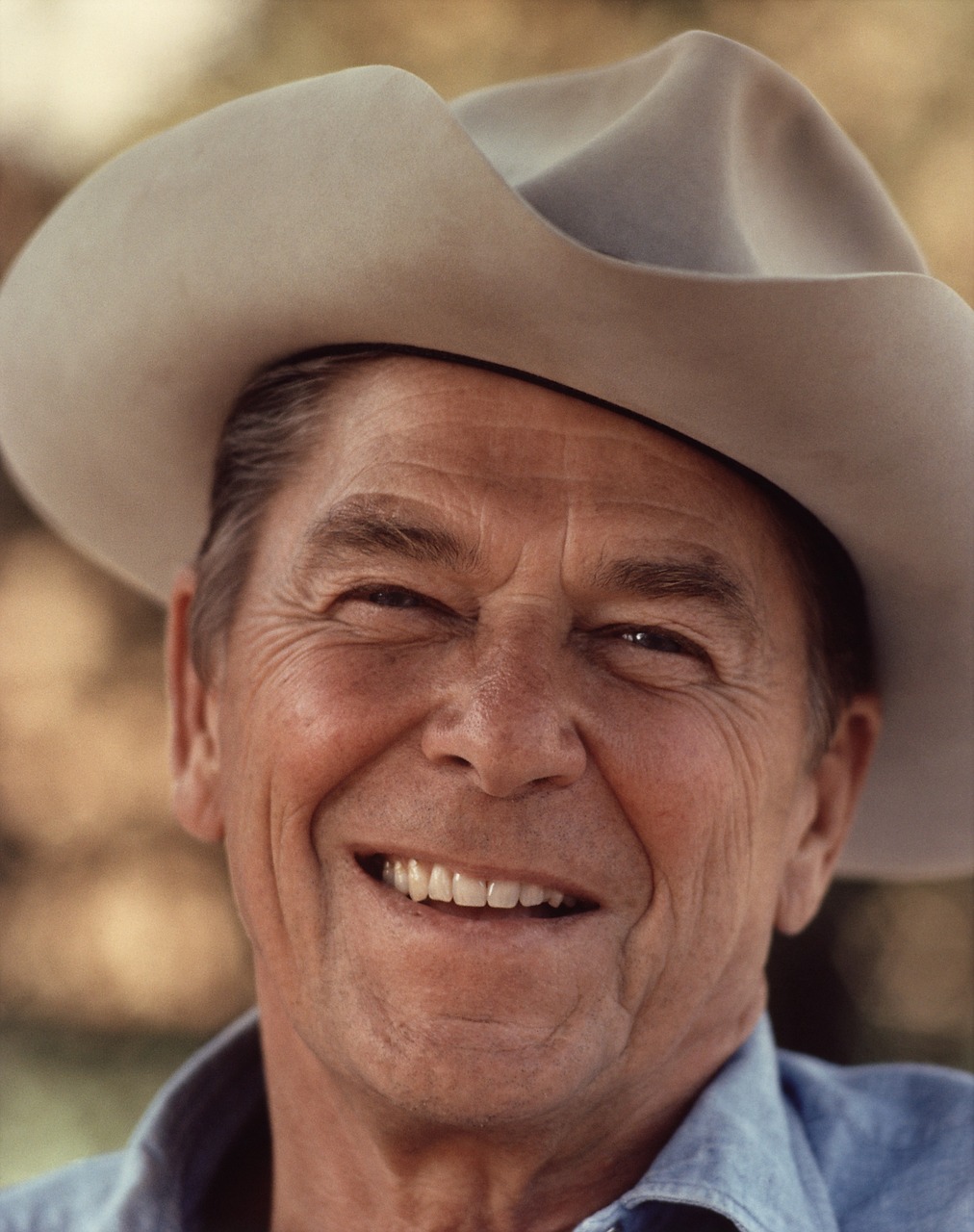
Ronald Reagan Has Shaped U.S. Labor Law for Decades
Before Reagan became President, the five members of the NLRB tended to be career government lawyers. Reagan broke that mold by stacking the Board with individuals who had spent their careers representing management. The Reagan NLRB aggressively reversed precedents, and narrowed workers’ rights, and workers are still feeling the effects of a number of key decisions made by the Reagan appointees. This is largely due to agency norms that have only been eroded in recent years. In litigation before the Board, the NLRB’s General Counsel controls the theory of the case, and prior to the Trump Administration, the General Counsel wouldn’t authorize a complaint if conduct was lawful under existing precedent. The Board’s current General Counsel, Jennifer Abruzzo, still adheres to that practice. While she has argued that the Board should reconsider some anti-worker precedents, she will not authorize a complaint where the employer has not committed any violation under current Board law. Moreover, since these cases have been followed for forty years, they have acquired an air of legitimacy that presents an additional obstacle to overruling them.
Organized Labor in North America Under Siege
During Reagan Administration
For the several decades, working people saw their standard of living diminish as corporate profits skyrocketed. The Reagan-Bush philosophy of “free” trade encouraged many major companies to close shop in the U.S. and reopen in Third World countries where wages are low and environmental and safety laws are virtually nonexistent.
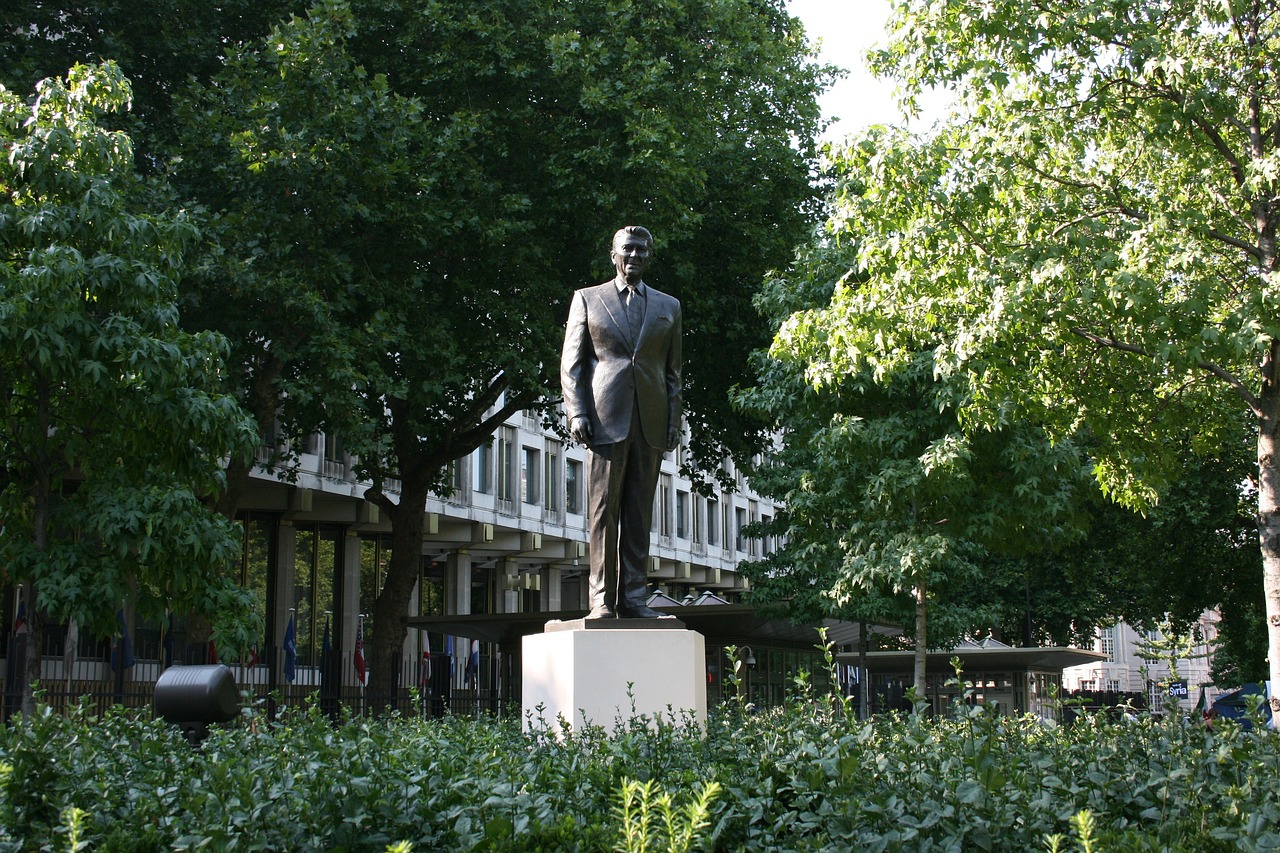

When Reagan Broke the Unions
After Reagan fired all of the striking air-traffic controllers, suddenly around America, strikebreaking became the thing to do. Striking copper miners in Arizona – fired. Striking paper workers in Maine – fired. Meatpackers, bus drivers – so many strikes in the 1980s were broken to the point where unions realized that employers wanted them to strike so that they could fire them and replace them with nonunion workers. And if you realize that your boss wants you to strike so they can fire you and rehire somebody else, that is going to make you less likely to strike, the main piece of leverage unions have.
George H.W. Bush Was an Enemy of the Working Class
Bush had failed to recognize the simple truism of Clinton’s campaign: “It’s the economy, stupid.” But setting aside his relative inaction during the recession, Bush’s long record of supporting policies that benefit the wealthy at the expense of average Americans cemented his legacy. He was no patrician statesman whose example can lead us out of our current dark times. Rather, he was a foot soldier for the ruling class who played a substantial role in bringing us to where we are today. His role as a chief architect of U.S. neoliberal trade policy through ushering in the North American Free Trade Agreement (NAFTA) helped to exacerbate global inequality and fuel the loss of over one million manufacturing jobs in the United States and Canada.
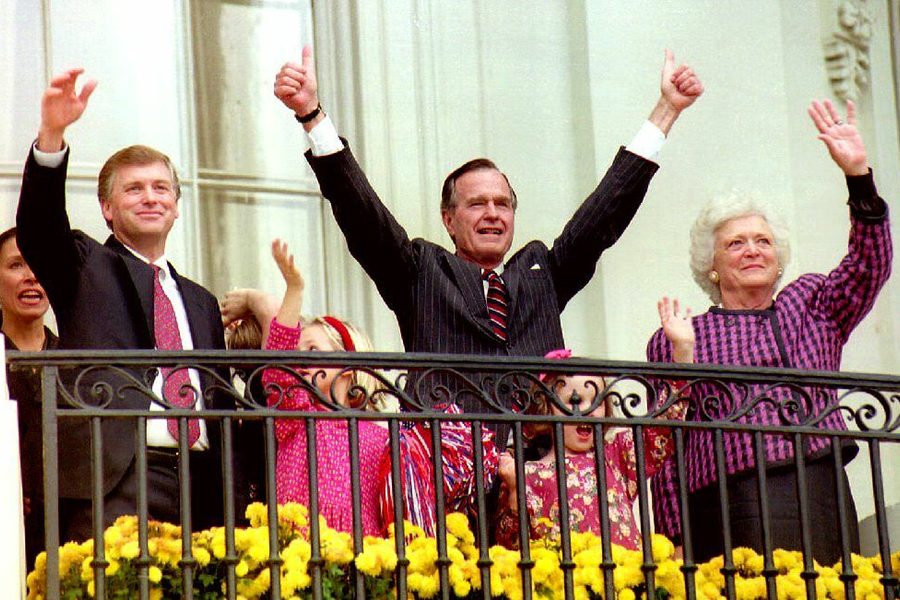
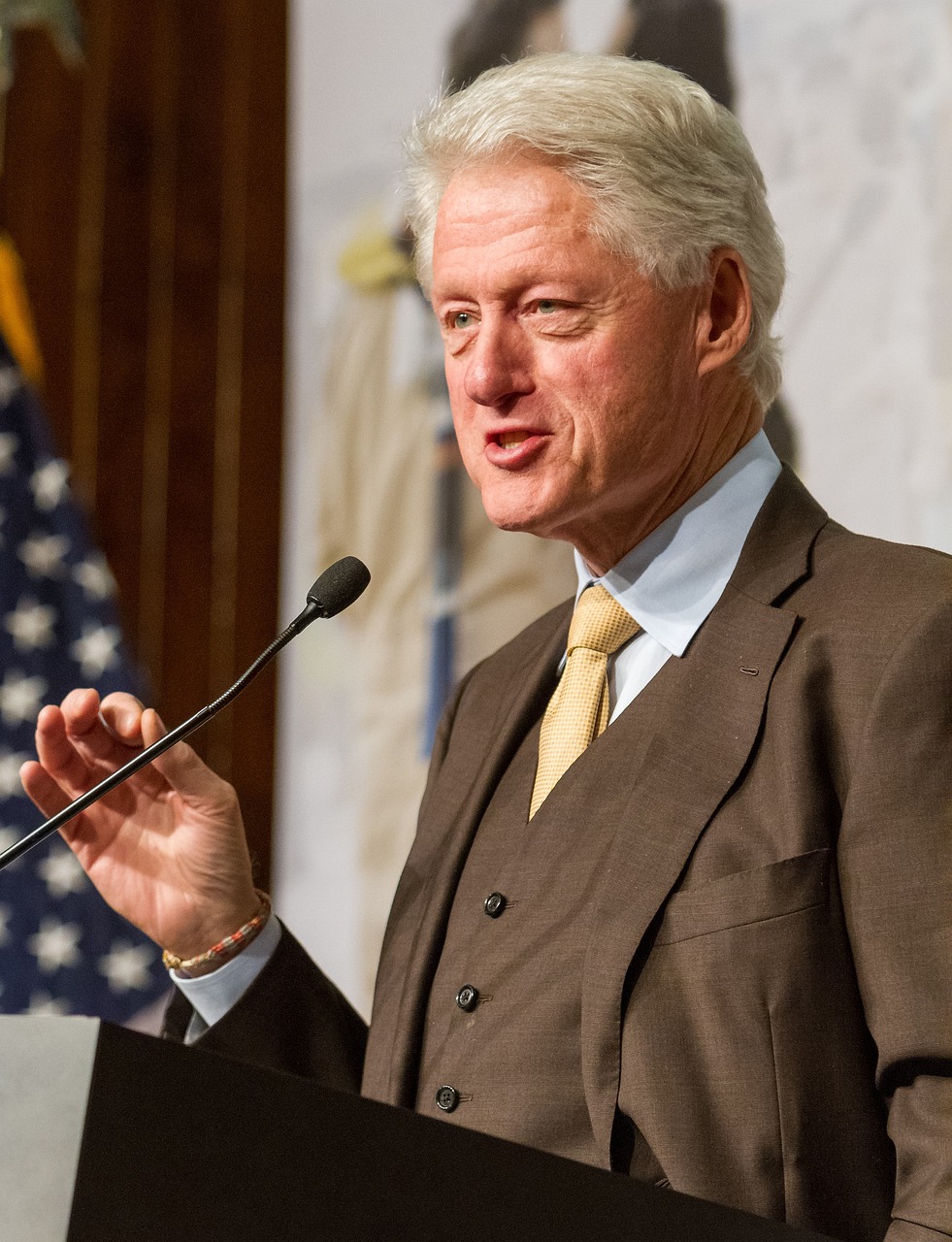
NAFTA, Twenty Years After
A Disaster
NAFTA’s birth was bi-partisan—conceived by Ronald Reagan, negotiated by George Bush I, and pushed through the US Congress by Bill Clinton in alliance with Congressional Republicans and corporate lobbyists.
Clinton and his collaborators promised that the deal would bring “good-paying American jobs,” a rising trade surplus with Mexico, and a dramatic reduction in illegal immigration. Instead, NAFTA directly cost the United States. a net loss of 700,000 jobs. The surplus with Mexico turned into a chronic deficit. And the economic dislocation in Mexico increased the the flow of undocumented workers into the United States.
Nevertheless, Clinton and his Republican successor, George Bush II, then used the NAFTA template to design the World Trade Organization, more than a dozen bilateral trade treaties, and the deal that opened the American market to China—which alone has cost the United States another net 2.7 million jobs. The result has been 20 years of relentless outsourcing of jobs and technology.
The roots and legacy of Bill Clinton’s ‘abandonment’ of organized labor
Bill Clinton, with the help of political consultant Dick Morris, wrote a series of ads for Pryor’s campaign warning that unions were “disastrous for the economy of Arkansas.” Bumpers joined the Senate filibuster that killed the bill.
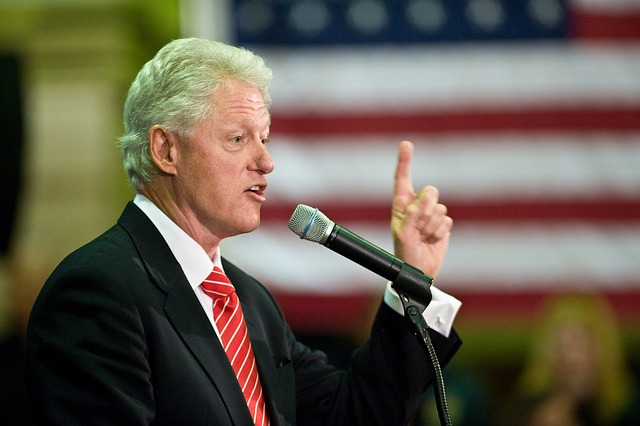
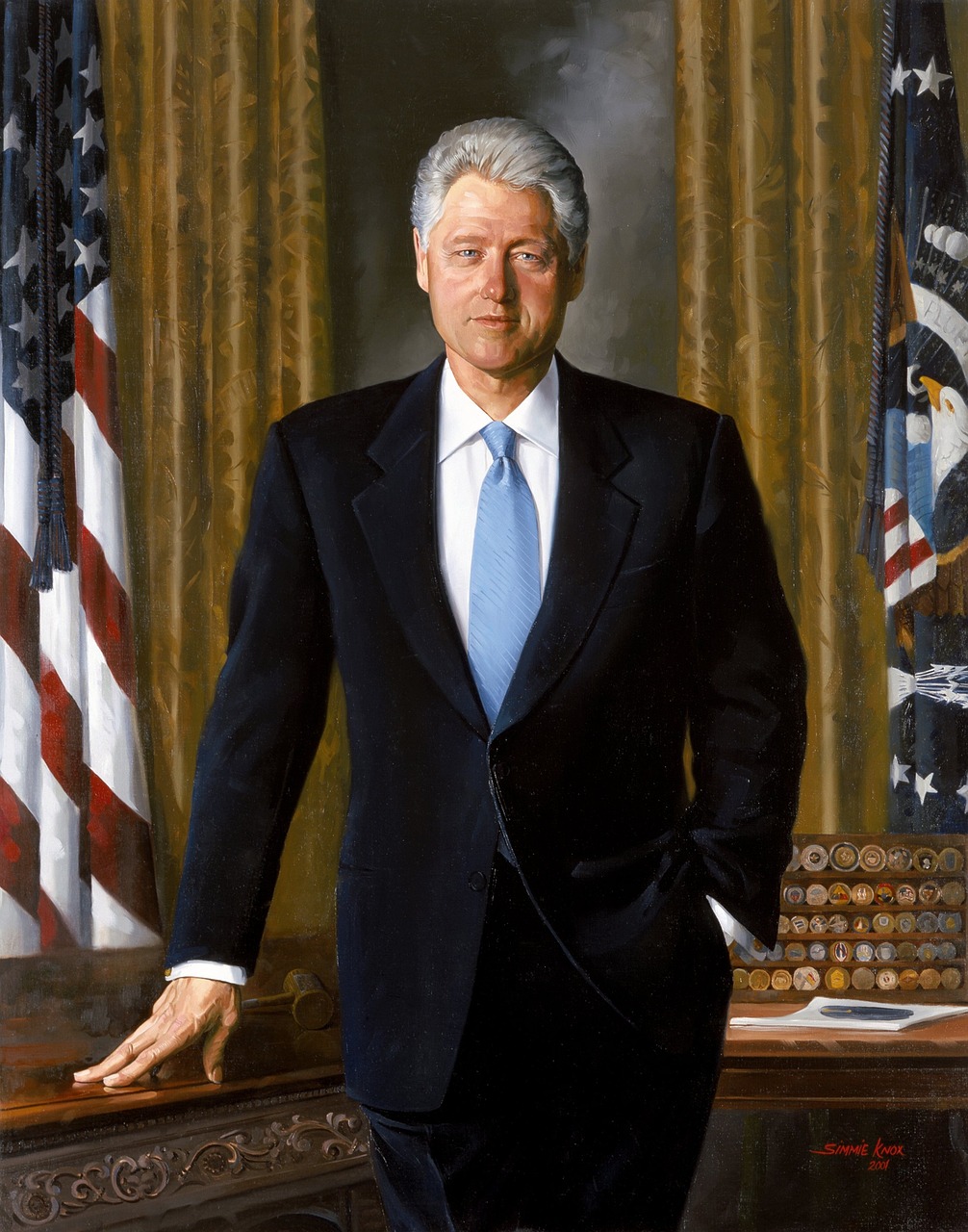
Bill Clinton’s Presidency Was a Disaster for Labor
Though Bill Clinton ran for president on promises of empowering workers, in office he gutted welfare and passed NAFTA, undermining organized labor and driving working-class voters away from the Democratic Party. We’re still living with the consequences.
Unions See Bush Moves as Payback for Backing Gore
Labor unions fought their hardest last fall to defeat George W. Bush, and in his two months in office he has taken many actions that union officials view as retaliation.
In recent days, President Bush has signed legislation to repeal union-backed workplace safety rules and has intervened to stop a mechanics’ strike at Northwest Airlines. He has issued an executive order ending the preference that unionized companies had in many federally financed building projects. And he has issued another order intended to make it harder for unions to use their members’ dues for political activities.
Union officials view those moves as punishment for their backing Al Gore and as part of a broader strategy to weaken organized labor on national issues in general and in politics in particular.
”A lot of his agenda is advancing the interests of business, and it’s very clear that if you want an unfettered field for corporate interests then you have to weaken labor,” said Denise Mitchell, the A.F.L.-C.I.O.’s communications director.
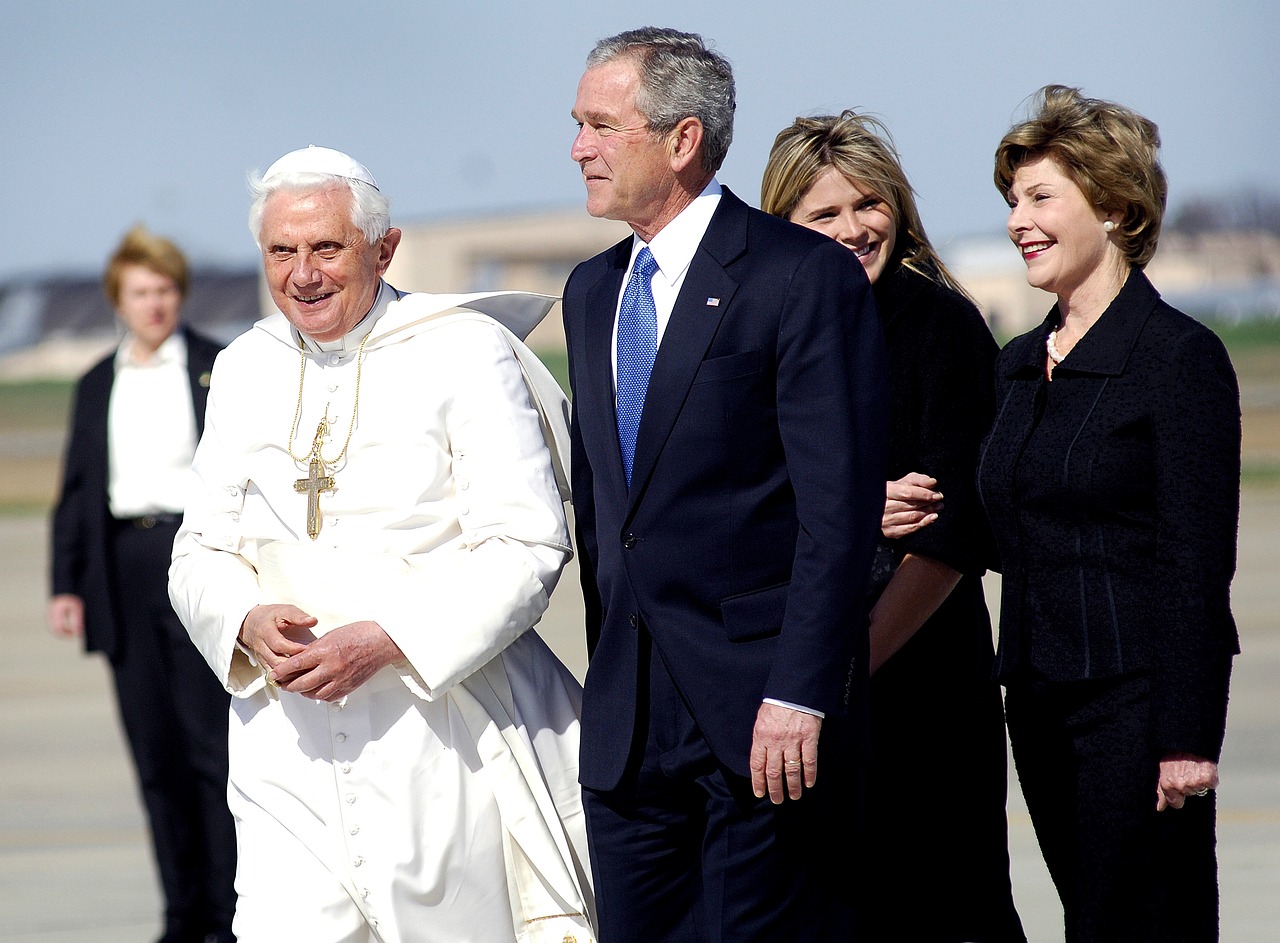
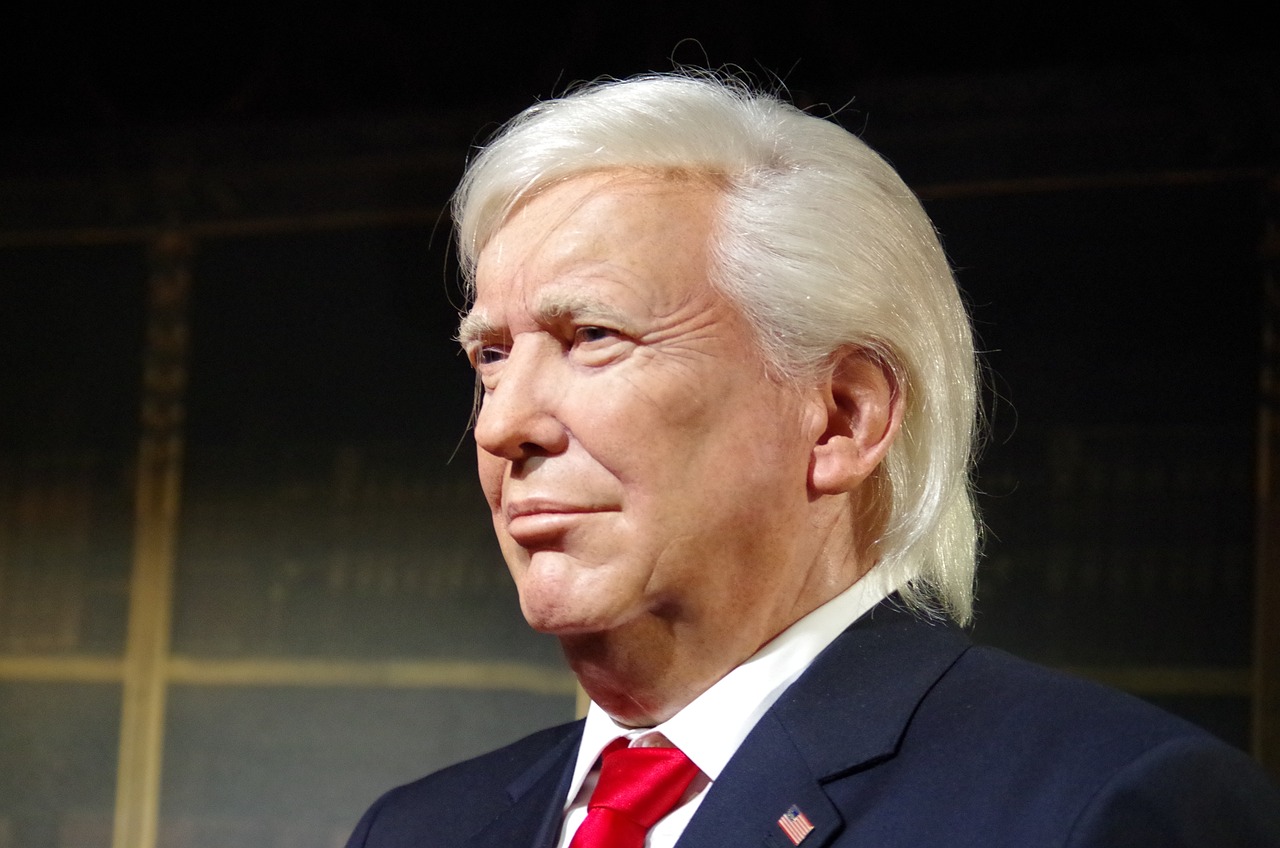
Donald Trump’s Catastrophic and Devastating Anti-Labor Track Record
Donald Trump told us in 2016 he would stand with workers. He lied. The difference now is that he has a record he can’t hide from. And that record was catastrophic for workers. Former President Trump spent four years in office weakening unions and working people while pushing tax giveaways to the wealthiest among us. He stacked the courts with judges who want to roll back our rights on the job. He made us less safe at work. He gave big corporations free rein to lower wages and make it harder for workers to stand together in a union.
The Supreme Court is Powerful and the President appoints people to serve on the Court for Life
Janus v. AFSCME
Janus v. American Federation of State, County, and Municipal Employees, Council 31, No. 16-1466, 585 U.S. ___ (2018), abbreviated Janus v. AFSCME, is a landmark decision of the US Supreme Court on US labor law, concerning the power of labor unions to collect fees from non-union members. Under the Taft–Hartley Act of 1947, which applies to the private sector, union security agreements can be allowed by state law. The Supreme Court ruled that such union fees in the public sector violate the First Amendment right to free speech, overruling the 1977 decision in Abood v. Detroit Board of Education that had previously allowed such fees.
The Janus case was brought forward to hurt Labor Unions and Public Sector Unions have been a cornerstone of strength for Organized Labor in states that allow the Union Security Clause. Doing away with the fee payer option and allowing people to become free riders is meant to cripple the Labor Movement long term.
The Yes Votes
Chief Roberts – Appointed by Bush 2
Kennedy – Appointed by Reagan
Thomas – Appointed by Bush 1
Alito – Appointed by Bush 2
Gorsuch – Appointed by Trump
The No Votes
Ginsburg – Appointed by Clinton
Breyer – Appointed by Clinton
Sotomayor – Appointed by Obama
Kagan – Appointed by Obama
Unions – Government – Politics
What is happening in the Labor Movement!
California fast-food workers want another minimum wage increase
Four months after California boosted the minimum wage for fast food-workers from $16 to $20 an hour, the union representing hundreds of thousands of employees is asking for another raise.
Members of the California Fast Food Workers Union, a branch of the Service Employees International Union (SEIU), presented their “demands” at Wednesday’s first-ever meeting of the state’s Fast Food Council.
SEIU members ratify new terms for their bargaining agreement
Members of the Service Employees International Union have voted to ratify the terms in the tentative agreement reached with Oregon’s public universities in February. This is the final step in the SEIU bargaining process allowing implementation of the new terms to begin.
The current collective bargaining agreement stipulated terms for reopening negotiations on select terms midway through the current contract. The reopened negotiations began in October of last year progressing through mediation earlier this year until an agreement was reached.
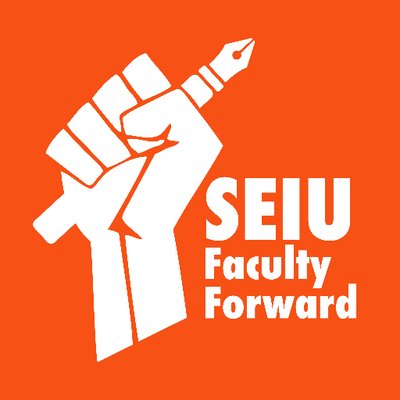

History Being Made at the SEIU International Convention
CFA members participated in this week’s history making SEIU International Convention in Philadelphia.
April Verrett became the first Black woman President of in the 103-year history of SEIU International.
Verrett is SEIU’s first Black president. SEIU members also elected Rocio Saenz as the first Latina to be Secretary-Treasurer. CFA President Charles Toombs was elected to the International Executive Board.
SEIU members passed various resolutions including calling for the decolonization of Puerto Rico and a ceasefire in Palestine.
More than 600 administrative workers at Syracuse University vote to join union.
Syracuse, N.Y. — Syracuse University administrative, technical and professional workers on Tuesday voted to join the Service Employees International Union.
The workers voted 3-1 to join the union during balloting at SU’s Shaffer Art Building on Monday and Tuesday, the union said in a news release.
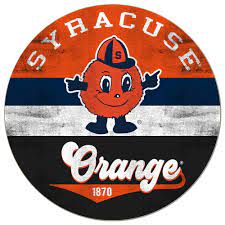
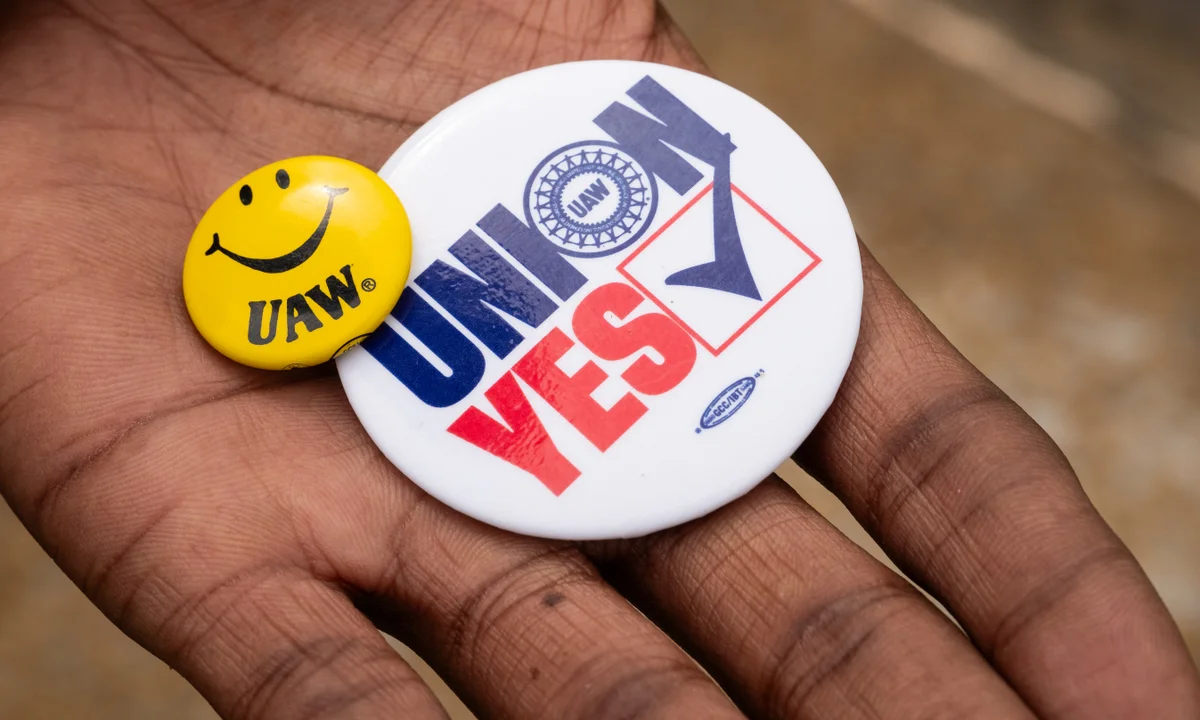
Southern Autoworkers’ Union Drives Can Help Reverse Decades of Job Quality Decline
On the heels of a UAW victory in Tennessee, Mercedes-Benz workers are about to vote on unionization in Alabama.
Data show anti-union ‘right-to-work’ laws damage state economies
As Martin Luther King, Jr. pointed out in 1961, “right to work” is a “false slogan” since RTW laws provide neither rights nor work and are in fact designed “to rob us of our civil rights and job rights [and] to destroy labor unions and the freedom of collective bargaining by which unions have improved wages and working conditions of everyone.” Decades later, research bears out King’s contention that “wherever these laws have been passed, wages are lower.”
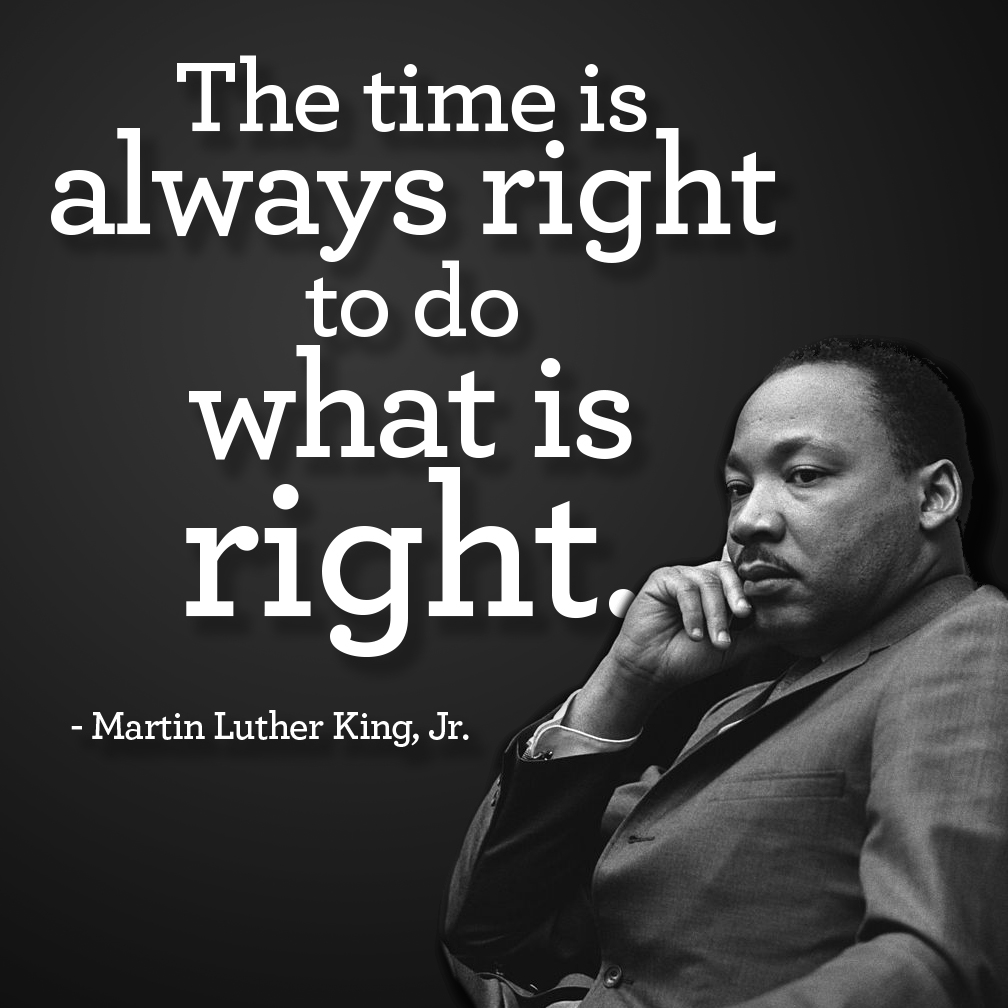

Retiree Health Care Costs Continue Rising
Health status, location and age at retirement all affect how much a retiree can expect to spend on health care costs.
For a 65-year-old man retiring in 2024 with Medicare plus Medigap plus Part D, the costs are even higher, as they are projected spend approximately $281,000 on health care expenses throughout retirement and a woman with the same coverage is projected to spend $320,000.
Tugboat Strike in New York Harbor (1946)
Although the war was over, the federal government was still regulating the price of freight, which meant that shipping companies didn’t want to raise wages. Frustrated, the tugboat workers struck. Starting February 4, 1946, tugboats did not move coal or fuel in the nation’s busiest port.
After 18 hours of shutdown, the shipping companies and the tugboat unions agreed to end the strike and enter into third party arbitration for their contract. Tugboats started moving fuel again, and the lights turned back on.
As for the tugboat workers, it would take nearly another year for the threat of a strike to fade completely. Negotiations continued throughout 1946, with little movement, until the threat of another strike emerged in December of 1946. It was avoided by additional arbitration with Mayor O’Dwyer’s emergency labor board. Finally, the arbitrators won concessions from both sides, and on January 5, 1947, the New York Times reported that a settlement had been reached. The tugboat workers got their 40 hour workweek, but not the same wages as 48 hours of work. They did get an 11 cent per hour wage increase along with a minimum wage for deck hands, a five day workweek, and time and a half for Saturdays and Sundays. However, the contract was only for 12 months, and in December of 1947, another strike was on the table as workers struggled for another wage increase. The strike was averted with more concessions from the companies, including a ten cent raise, food allowances, and more. But in the fall of 1948, the contract was up again, and the specter of the February, 1946 shutdown arose as a strike was once again on the table as part of the negotiations.
Strikes were common in the years following the Second World War, in nearly every aspect of American society. In particular, the Strike Wave of 1945-46 impacted as many as five million American workers across all sectors. The strikes, although sometimes effective in improving worker wages and conditions, were largely unpopular with the general public. In 1947, Congress overrode President Truman’s veto of the Taft-Hartley Act, which limited the power of labor unions and ushered in an era of “right to work” laws.
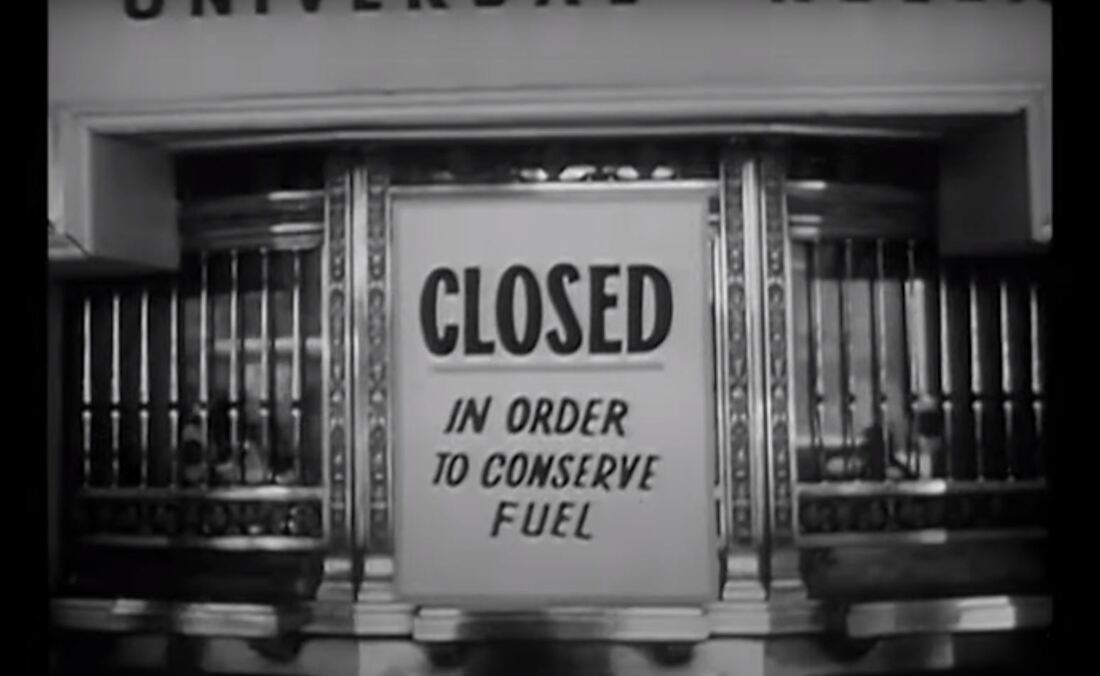

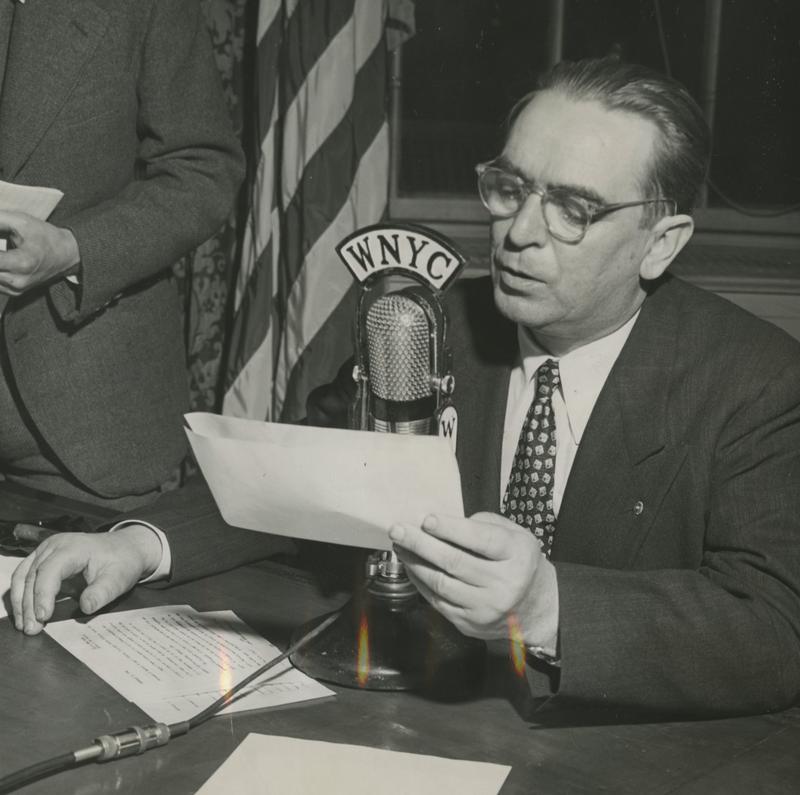
Mayor William O’Dwyer
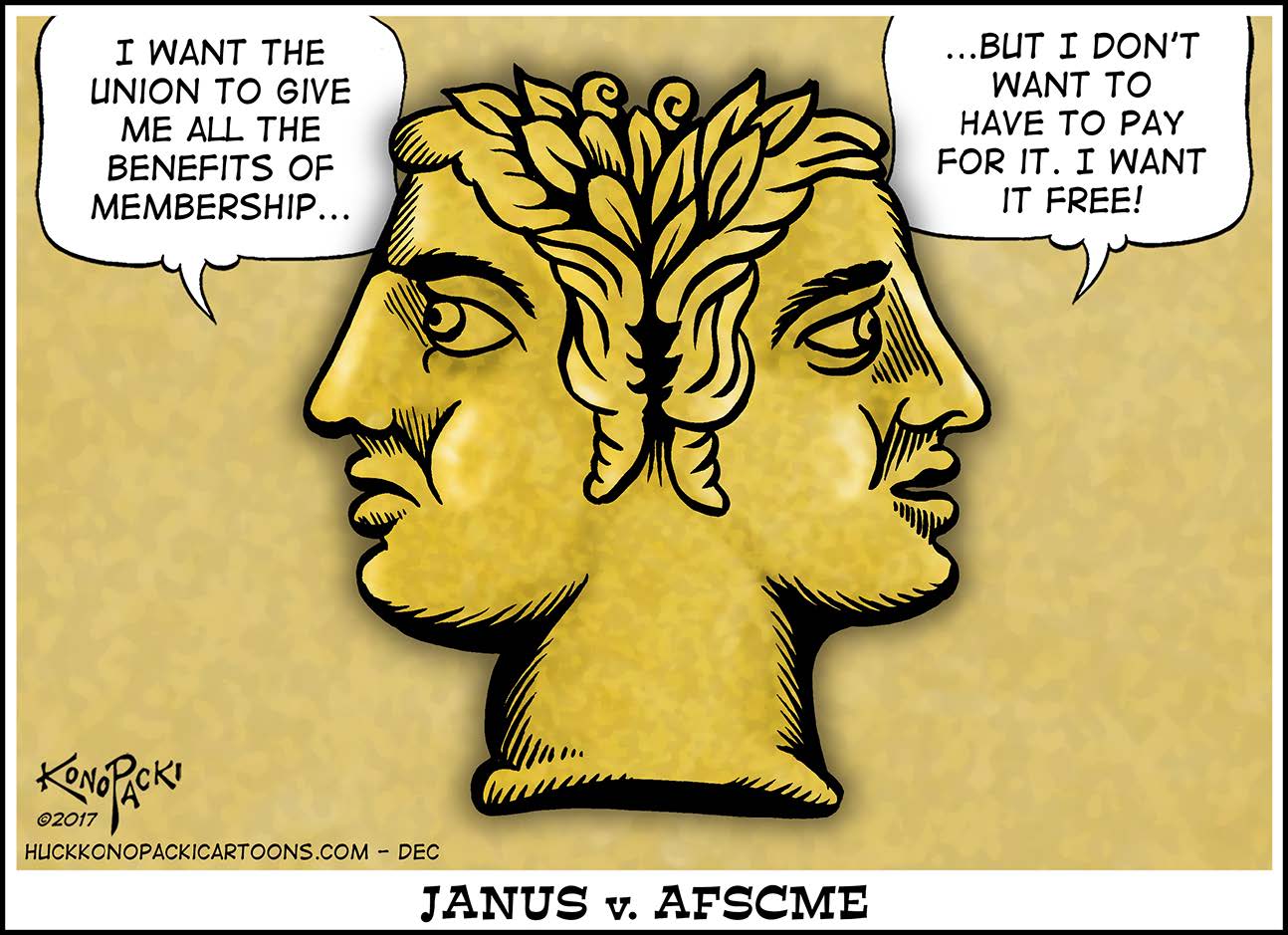

October 31, 2023 HUMAN RIGHTS
The Impact of Janus on the Labor Movement, Five Years Later
by Michael Artz
Janus v. AFSCME Council 31 turned five years old this past June. Happy birthday to the Supreme Court case that twisted the interpretation of the First Amendment away from the freedom of association principles that protect workers’ rights to join labor unions and instead toward an interpretation of freedom of speech that now prohibits public sector unions from charging fees to nonmembers for union representation provided.
A lot has happened in the five years since Justice Samuel Alito authored the decision, decided 5–4 along the frequent conservative/liberal split seen in important Supreme Court decisions. Two justices have retired. One has passed away. A president has been impeached, twice. Mark Janus, the named plaintiff in the case, and reflecting perhaps the two-faced Roman god who shares his name, left his job working for the Illinois Department of Healthcare and Family Services and took a position as a senior fellow at the Liberty Justice Center, a conservative anti-union organization that played an outsized role in bringing the case before the Supreme Court.
Some things have not changed. Bruce Rauner, former republican governor of Illinois who brought the original case, is still a billionaire. And public sector unions continue to survive and even grow. What did not happen was the predicted crippling of public sector unions, hoped for by those who celebrated the Janus decision.
The Janus case was the third and final act in a trilogy of cases aimed at eliminating what are called “fair share fees” or “agency fees” within public sector unions. A fair share fee is a percentage of total union dues paid by an employee covered by a collective bargaining agreement but who chooses not to join the union as a member. The fee cannot be used for political purposes and is paid to the union for the services provided to the employee through collective bargaining and for the administration of the contract.
These organizations also immediately got to work attempting to convince public sector union members their time had come to drop their membership. Some, like the conservative Mackinac Center for Public Policy, set up a drop-your-dues hotline. The Freedom Foundation, part of the State Policy Network of corporate-funded conservative groups, and other anti-union groups, engaged in an intense campaign to convince public sector union members to drop their membership and become free riders, including mailings, canvassing, door knocking, and worksite visits.
The “drop campaigns” failed to make a significant dent in public sector union membership numbers. As the American Federation of State, County and Municipal Employees (AFSCME) President Lee Saunders has noted, “anyone writing [union’s] obituary is going to be sorely disappointed.” The numbers reported by the U.S. Bureau of Labor Statistics (BLS) demonstrate just how weak the Janus impact has been. For example, from 2018 when Janus was decided to the following year 2019, local (cities, counties, and other local jurisdictions) public sector union membership went down about 1 percent from 40.3 percent to 39.4 percent. For state government workers, however, the percentage went up from 28.6 percent to 29.4 percent—hardly the death knell hoped for by the anti-union entities. Overall, the decline in the union membership rate in the public sector from 2018 to 2019 was a paltry .3 percent (about 100,000 members), about on par with the private sector decline at .2 percent. The slight decline also correlates to the decline in the total number of public sector jobs available.
Those in favor of the Janus decision were forced to admit the lack of the decision’s reach. The Freedom Foundation noted only a slight decline in public sector union membership in 2018. An April 2022 report from the Manhattan Institute, another conservative organization, reported largely flat membership rates from 2018 to 2022. Per the BLS year-end 2022 report, public sector union membership declined by only .8 percent from 2021. And according to internal union reports, the rate of fair share fee payers becoming full-fledged dues-paying members outpaces those dropping membership at a rate of five to one.
The reason for the lack of severe membership losses in the wake of the Janus decision may be that unions prepared for and reacted to the decision in several proactive ways. AFSCME, for example, beginning after the Harris and Friedrichs decisions, implemented an internal organizing program called “AFSCME Strong,” which prioritized one-on-one communications, member-to-member engagement, new computer technology to aid organizing and sign-up, and more political engagement to pass laws allowing for better access to worksites and potential members. Other public sector unions made similar efforts, and by inoculating and organizing, the drop campaigns failed to resonate with workers. By convincing existing members of the value of their union, persuading some nonmembers to join, and recruiting new hires into the union, these unions softened the blow. Unions reminded workers that public sector union members make 11 to 14 percent more than nonunion members similarly situated and are more likely to have health insurance, paid sick days, paid vacation days and holidays, and retirement benefits.
Meanwhile, the right-wing organization’s litigation strategy post-Janus has widely failed. Anti-union groups have filed close to 200 lawsuits in state and federal courts. To date, not a single court has ruled in their favor, although a handful are pending certiorari at the Supreme Court. These lawsuits have unsuccessfully advanced numerous theories to recoup past dues payments, end exclusive representation in the public sector, challenge maintenance of membership language on membership cards, and allege similar First Amendment arguments made in the Janus case.
Moreover, the overall climate and public opinion about unions have changed since 2018. Since Janus, the excitement level about unions and collective action in the workplace is at historically high levels. A widely reported 2021 Gallup poll showed the union approval rate at 68 percent, the highest since 1965. Workers in the public and private sectors are engaging in more workplace actions, more strikes, and more organizing campaigns in their workplaces. With this developing culture of union support and approval, perhaps public sector union members also viewed the Janus decision as a naked political attack on their unions, one that damaged the Supreme Court’s reputation and legitimacy, which continues to this day.
The observation from the Abood opinion back in the 1970s that prohibiting fair share fees could lead to less labor peace has proven to be correct. Without stable collective bargaining regimes within workplaces, workers and their unions will engage in more disruptive strategies and tactics to allow workers to have a voice within their workplaces. October 2021 was nicknamed Strike-tober. Large-scale strikes or other work stoppages sparked at John Deere, Kellogg’s, and other large employers. Fifteen-thousand hotel workers in Southern California were on strike in late June into July 2023. Writers and actors are on strike. High-profile union victories after work actions have been seen at Amazon, Starbucks, and UPS. Perhaps Janus was a labor movement wake-up call, not a termination notice.
Additional Info
Know your history: U.S. labor laws and unions
It’s impossible to cover every win and influence the labor movement has had in the United States in one article. But if you’re reading this on your lunch break, day off, or at the end of an 8-hour shift, it’s thanks to the countless sacrifices of labor organizers of decades past who fought to make such expectations at any given job commonplace.
The steps you are considering, to form a union, are a part of a centuries-spanning, worldwide effort to build solidarity, provide just compensation, and recognize the dignity of workers. In North America, some scholars date the movement back to 1648 when shoemaker and barrel-maker guilds were legally recognized by the City of Boston, then under British rule. The earliest recorded strike took place in 1768 when journeyman tailors in New York took action to fight a wage reduction. Keep in mind that slaves who threw down tools or rebelled, effectively withholding otherwise forced labor on Southern plantations, are just as much a part of the story of U.S. labor struggles as are the iconic sit-in strikers at General Motors plants in the 1930s.
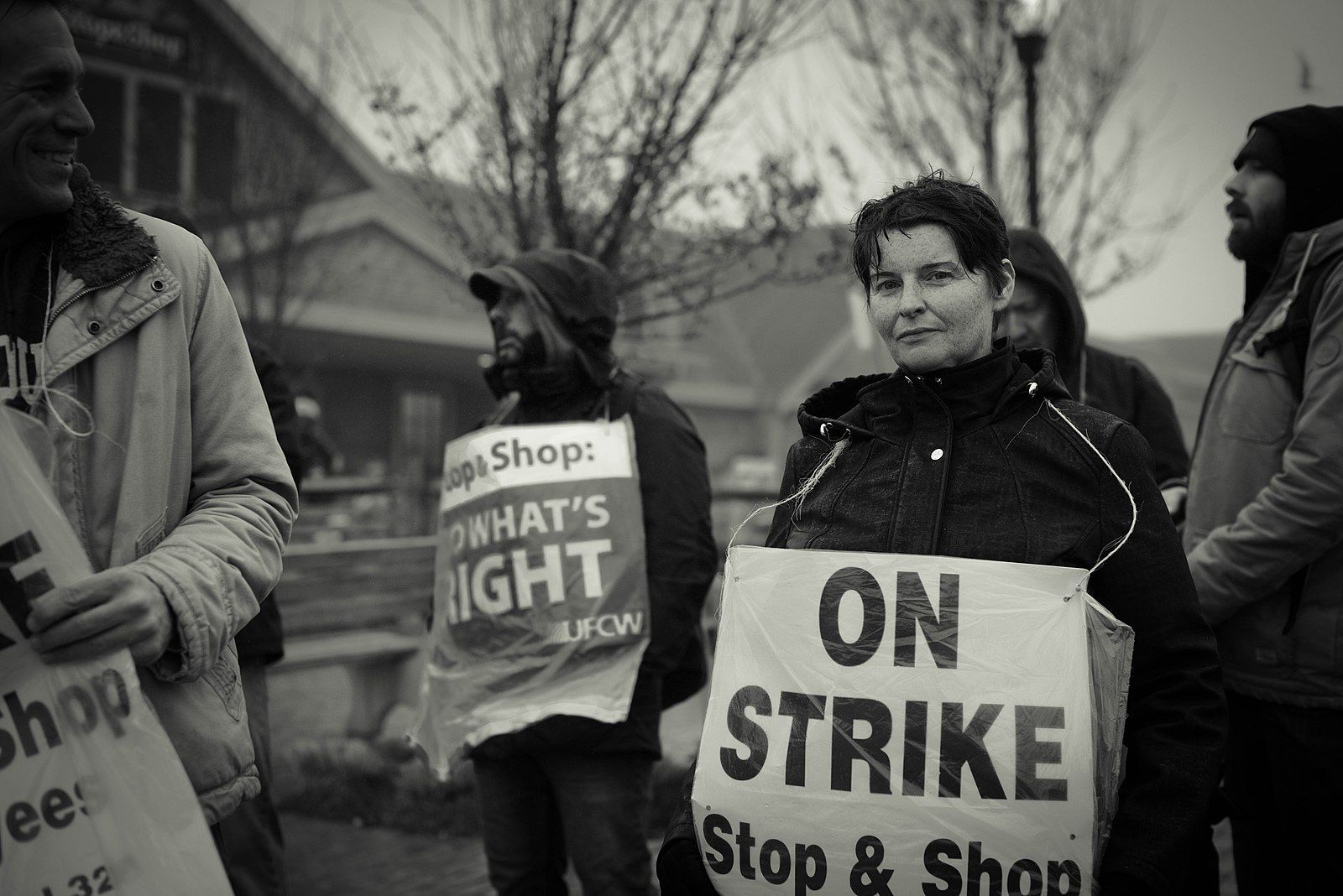
Much like the rest of society, racism, misogyny, and prejudice have greatly limited which kinds of workers benefited from labor campaigns and laws passed. However, unions have grown more inclusive, fighting for gender equality, immigrant rights, and a broad array of workplace protections.
“The labor movement was the principal force that transformed misery and despair into hope and progress. Out of its bold struggles, economic and social reform gave birth to unemployment insurance, old-age pensions, government relief for the destitute, and, above all, new wage levels that meant not mere survival but a tolerable life,”
– Martin Luther King Jr.
The early days and the wins we take for granted
Before the National Labor Relations Act of 1935 was signed into law or the enactment of any subsequent federal safeguards (see below), unionization regulations and workers’ legal rights were a patchwork of protections or completely nonexistent across states. The Knights of Labor (1869) and American Federation of Labor (1886) were some of the most significant early labor organizations at the national stage calling for dignified wages and 8-hour workdays. Without legal protections like we have today, their efforts were often met with state-sanctioned violence.
At the turn of the 19th century, as these groups and others began to secure wins in states across the U.S., broader struggles for human rights began to take shape among women, children, minorities, and immigrant workers, which continue to today.
Laws on the books
A lot of the legislation enshrining and expanding workers’ rights would not have been possible without the actions and coordinated campaigns of working-class activists and minority-led advocacy organizations. Here are a few bills you should know, much of which came about during the 1930s New Deal Era under President Franklin Delano Roosevelt:
National Labor Relations Act of 1935: The NLRA (also referred to as the Wagner Act or organized labor’s “Magna Carta”) formalized the process through which private-sector unions can be recognized under U.S. law. It also guaranteed workers the right to organize.
Social Security Act of 1935: The SSA created retirement benefits for 96 percent of U.S. workers; a survivor’s fund for the family of a deceased worker; and disability benefits for people who can no longer work.
Fair Labor Standards Act of 1938: The FLSA banned child labor; mandated a 40-hour workweek; and formalized a federal minimum wage.
Equal Pay Act of 1963: The EPA banned wage discrimination based on gender.
The Civil Rights Act of 1964: The CRA ended legal segregation in public places and prohibited employment discrimination based on race, color, religion, sex, or national origin.
The U.S. Department of Labor has a longer list of major labor legislation, which can be viewed by clicking here.
Where things stand
Following the rise of federal union legislation came a backlash. Anti-labor politicians gained power and enacted policies, like the Labor Management Relations Act of 1947, which made it harder to organize and weakened the movement.
In 1983, unions represented about 1 out of 5 Americans. Now, that number has dwindled to 1 out of 10. Years of austerity and cuts to the safety net coupled with a massive growth in the U.S.’s productivity have been met with stagnant wages for the very people who create these profits.
Study after study shows that we can reverse this trend, and it starts with you.
According to the Economic Policy Institute, a worker covered by a union contract earns 13.2 percent more than a non-union worker with similar education, occupation, and experience. The goals of a capitalist society like the one we live in have long hinged on the process of getting the most productivity out of workers for the most profit at whatever cost. Well, unions stand at the frontlines on behalf of everyday people, fighting to make sure that we have a voice when management makes decisions about our livelihoods.
The current reach of labor organizing ranges from a broad set of industries and sectors, from the public to the private, from the post office to legislative staff, from janitors to tech workers.
The labor movement needs people like you, willing to step up and join the fight for dignity and a voice on the job.
American Companies Have Always Been More Anti-Union Than International Ones. Here’s Why
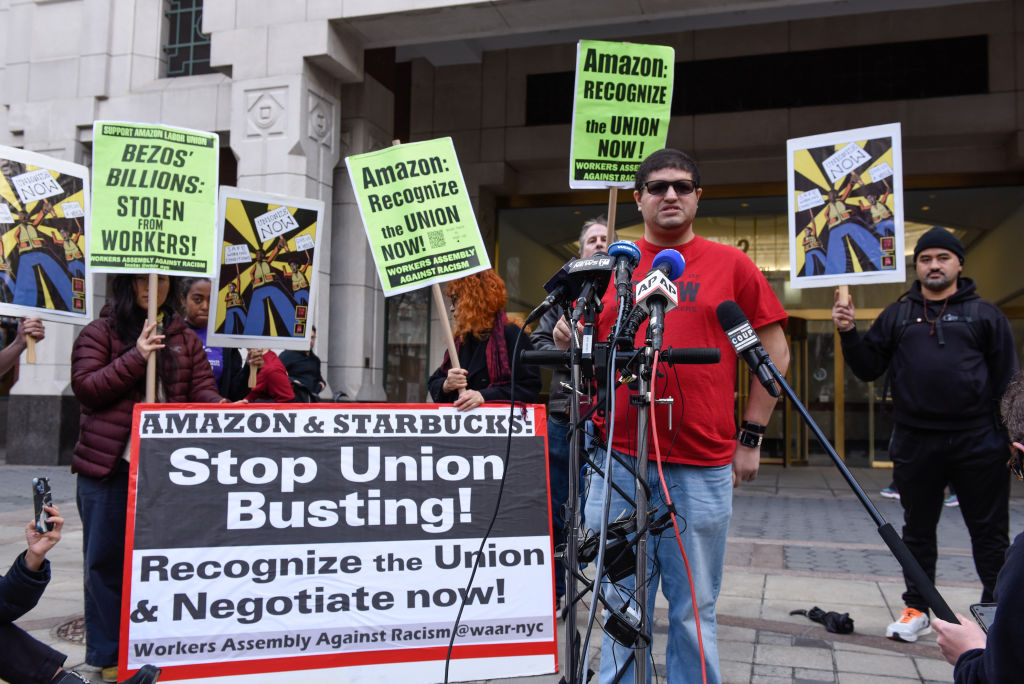
Why do companies fight unions?
Unions became popular in the U.S. starting in the 1930s, with membership rising from just over 10% of the eligible working population in 1936 to about a third by the mid-1950s, according to 2021 research published in the Quarterly Journal of Economics. That remained the case until the mid-1980s, when they fell out of favor, thanks to a culture in which companies refocused on maximizing shareholder value and minimizing worker benefits, as well as a court-backed emphasis on the value of private property and private profit. “Those years turned out to be basically a blip in what otherwise has been not only a very contentious, but many times a very violent interaction between workers and employers in this country,” Devault says of the mid-20th century.
During unions’ heyday in the U.S., however, the income gap between the richest and poorest Americans shrunk considerably. “The only time that the bottom tenth of the population and the top tenth of the population have come closer together has been during those years, when unions were operating in the largest corporations in this country,” Devault says. As unionization declined in the 1970s and 80s, that income gap grew once more. Today, it is at an all-time high since tracking began over 50 years ago, based on Census Bureau data. Research shows that as much as $50 trillion has migrated into the coffers of the top 1% of income earners in the U.S., an upward redistribution of wealth that has squeezed out the middle class.
How have companies been impacted by unionization?
The true effect of unionization on business success is difficult to parse, further studies note, because unionization is “nonrandom” by nature. According to a comprehensive study from 2003 that reviewed nearly 30,000 firms in a nearly two-decade span, there are two main types of places where unions come together: some organize at “highly-profitable enterprises” that are very likely to survive collectivization, while others organize at firms that are “poorly managed, or… faced recent difficulties,” making unionization particularly appealing to workers. The conclusion, however, was clear: “Unions likely do not affect businesses by making them more susceptible to failure or re-location, despite the fears of many employers and employees.”
Plus, increased wages in union companies often means that wages rise across the board as standards change. When workers make more, they have more disposable income to spend more, and the broader economy is lifted. It’s the opposite of the trickle-down economics theory that became popularized in the 1980s.
Should workers be concerned about unionization?
There has long been rhetoric that unions do shift the employee-employer relationship—and may impact worker incentivization. When wages are standardized, good conditions are guaranteed, and layoffs are limited, workers have little motivation to work harder, companies argue.
But when unions are functioning well, Devault says, they aren’t just about pay—but about making sure that workers have more overall power in the workplace. “The pandemic has really changed the way people look at their work,” she says. “We’re starting to see now [that one of those changes is that] I want some say in what goes on in my workplace.” And when workers have more say, they can be more invested in their company’s future, too.
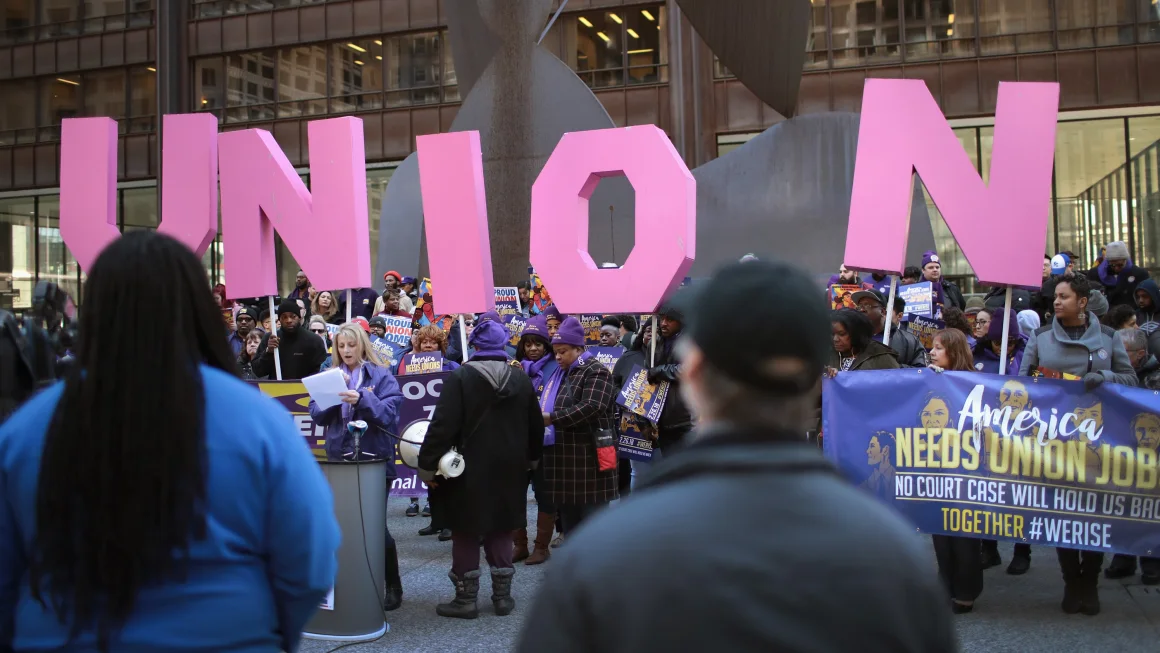
Labor law makes it too hard to start unions. Workers deserve a bigger voice
Although employers are legally barred from disciplining or firing workers involved in the union organizing process, many employers do so anyway because the penalties are so low. An employer that illegally fires a union organizer is liable only for paying the worker’s back pay—minus any income the worker has earned in the meantime.
On top of these barriers to forming a union is the fact that current labor law makes it difficult, if not outright impossible, for unions to provide the services that workers say are most important, like having a voice when it comes to management decisions or health and retirement coverage they can take with them between jobs.
More on Donald Trump Sr.
50 reasons the Trump administration is bad for workers
President Trump has said he would ‘protect’ and ‘fight for’ workers. Instead, his administration has systematically done the opposite.
Report • By Celine McNicholas, Lynn Rhinehart, and Margaret Poydock • September 16, 2020
Download PDF
Press release
The Trump administration’s mishandling of the COVID-19 pandemic marks the administration’s most glaring failure of leadership. However, the administration’s response to the pandemic is in no way distinct from its approach to governing since President Trump’s first day on the job. The administration has systematically promoted the interests of corporate executives and shareholders over those of working people and failed to protect workers’ safety, wages, and rights.
The pandemic has merely provided the administration another opportunity to continue its attacks on workers’ rights. Instead of instituting policies to protect the nation’s essential workers, the administration has remained largely silent on workplace safety standards, refusing to issue mandatory emergency standards to protect workers against the new threat of the coronavirus. As a result, workers continue to be required to work without protective gear and other measures necessary to keep them safe.1 Furthermore, sick workers continue to lack access to paid leave.2 And, when workers try to speak up for themselves and one another, they are fired.3
This report provides a review of the Trump administration’s 50 most egregious attacks on working people since Trump took office. This analysis reveals that President Trump’s time in office has been marked by a clear commitment to advancing a pro-corporate, anti-worker agenda.
It is critical that a new administration work with the same diligence from Day One to reverse these actions. But simply reversing the Trump anti-worker agenda will not be enough. A new administration must advance a workers’ first-100-day agenda that includes measures that provide working people with the rights and protections they need and deserve.
Here are 50 ways the Trump administration has failed workers, starting with recent actions (or inactions) and extending back to the beginning of Trump’s presidency.
1. It has failed to support adequate fiscal stimulus during the coronavirus pandemic
In March 2020, Congress passed the CARES Act, which included a temporary $600 increase in weekly unemployment insurance (UI) benefits and $150 billion in aid to state and local governments. However, once the relief measures ran out, the Trump administration vehemently opposed the extension of the $600 increase of UI benefits4 and additional aid to state and local governments.5 The lack of fiscal relief will cost millions of jobs, including 5.3 million jobs due to insufficient federal aid to state and local governments6 and 5.1 million jobs due to the expiration of the $600 boost in UI.7
2. It has diminished the integrity and accuracy of the 2020 U.S. Census
In 2019, the Trump administration proposed adding an untested citizenship question to the 2020 Census questionnaire, which would have depressed response rates, cost taxpayers more money, and diminished the accuracy of the 2020 Census.8 The proposal was ultimately blocked by the Supreme Court.9 In August 2020, the Trump administration announced that counting efforts for the 2020 Census would end a month early, despite significant delays caused by the coronavirus pandemic.10 These actions by the Trump administration will diminish the integrity and accuracy of the 2020 Census, which plays a central role in allocating political representation and federal government resources across states and localities.
3. It stopped funding for Social Security
Under the guise of pandemic relief, President Trump signed an executive order suspending funding for Social Security.11 Specifically, the executive order allows employers to defer withholding and paying the 6.2% employee share of the Social Security payroll tax for workers making less than $2,000 per week. This poorly targeted tax deferral increases the disposable income of higher earners more and does nothing for unemployed workers.12 Only Congress has the authority to cut taxes—meaning affected workers may owe double taxes next year under the executive order. President Trump has said that he would like to permanently end payroll contributions to Social Security, but he has not offered a realistic plan to replace the lost revenue.13 Meanwhile, the Senate Republican leadership has tried to attach to a pandemic relief bill a fast-track, closed-door process that would make it easier to cut Social Security benefits.14
4. It dismantled fiduciary protections for retirement savers
The Trump Department of Labor (DOL) scrapped an Obama administration rule preventing conflicts of interest in investment advice offered to retirement savers, proposing to replace it with a misleading “best interest” standard based on vague and unenforceable language in an SEC rule.15 At the same time, the Trump administration reinstated a narrow definition of investment advice covered under a fiduciary standard that excludes most of the harmful “advice” offered to small savers.16 Dismantling fiduciary protections allows brokers and other salespeople to offer what appears to be expert advice while steering savers to higher-cost and lower-quality investments.17
5. It has engaged in persistent efforts to take away workers’ health care
The Trump administration sided with Congressional Republican allies18 in attempts to repeal the Affordable Care Act (ACA)19 in 2017, asked the Supreme Court to rule the ACA unconstitutional in its entirety on a wafer-thin legal justification,20 and weakened the ACA greatly as part of the 2017 tax cut for corporations.21 Finally, even in the face of millions of workers losing their employer-sponsored insurance (ESI) due to the COVID-19 economic shock,22 the Trump administration not only persisted in its efforts to repeal the ACA (through its request to Supreme Court), but also did nothing to make it easier for workers who had lost ESI to slide into coverage under the ACA marketplace exchanges, even though an administrative fix was easily available at the time.23
6. It narrowed the scope of ‘protected concerted activity’ under the NLRA
The centerpiece of the National Labor Relations Act (NLRA) is workers’ right to engage in “protected concerted activity”—for example, to protest, strike, or organize a union—to improve their working conditions. In a series of decisions and actions,24 the Trump National Labor Relations Board (NLRB) has systematically narrowed its interpretation of what counts as protected concerted activity, leaving workers unprotected against employer retaliation when they protest or strike over safety conditions (for example, insufficient protections from COVID-19),25 employer rules on tipping, and other issues.
7. It has persisted in attempts to end DACA
The Trump administration vowed to persist in its efforts to end Deferred Action for Childhood Arrivals (DACA) through the courts, despite legal challenges and despite the Supreme Court’s ruling that the administration had not followed proper administrative procedures in previous attempts.26 DACA is an initiative started in 2012 that allows eligible migrants who entered the United States without authorization as minors to obtain a temporary reprieve from deportation. Those eligible for DACA can renew every two years and are able to obtain a Social Security Number and an employment authorization document, allowing them to work lawfully and attend college. DACA has been one of the most successful immigrant integration programs ever, allowing recipients to have labor rights that have translated into massive wage gains and that make it more difficult for employers to exploit immigrant workers and the U.S.-born workers who work alongside them.27
8. It suspended the issuance of green cards
In June 2020, President Trump issued a presidential proclamation that suspends the issuance of permanent immigrant visas—also known as “green cards”—to migrants who are applying for them from abroad.28 Green cards grant lawful permanent resident status, which provides a path to citizenship for immigrants who wish to naturalize. Ironically, President Trump issued this proclamation at a time when nearly all forms of temporary and permanent immigration to the United States were already stopped or suspended as a result of the coronavirus pandemic. Nevertheless, if the proclamation were to remain in force for one full year during a period with normal levels of immigration, it would result in a reduction of nearly one-third of all green cards. This effort was clearly an attempt to scapegoat immigrants and blame them for a crashing economy in the spring of 2020.29
9. It has failed to act to protect the health of workers during the pandemic
Despite the widespread reach of COVID-19 in the workplace, the Trump administration’s Occupational Safety and Health Administration (OSHA) has refused to issue any required measures—via an emergency temporary infectious disease standard—to protect workers from the virus. OSHA even rejected a petition by unions representing affected workers and by the AFL-CIO for mandatory rules to protect workers from exposure to the coronavirus on the job.30 OSHA and the CDC have issued only general and vague guidance that OSHA is not enforcing.
Further, the Trump administration halted all work in 2017 on a permanent infectious disease standard that would have protected workers from COVID-19 and mitigated the spread of the disease at work and back out into the community.31
OSHA is also failing to enforce the Occupational Safety and Health Act during the pandemic. Despite over 9,000 complaints from workers about unsafe working conditions from COVID-19, the agency had issued only four citations for failure to protect workers as of August.32 A report by DOL’s Office of Inspector General found that understaffing of the agency has created significant delays in investigating these complaints.33 These delays put more workers at risk for being exposed to unsafe working conditions.
Not only has the Trump administration failed to protect the health of workers by issuing an infectious disease standard and by enforcing OSHA, it has in fact done the opposite. The CDC issued dangerous guidelines that allowed essential workers to continue to work even if they may have been exposed to the coronavirus—as long as they appear to be asymptomatic and the employer implements additional limited precautions.34 This guidance is in stark contrast to the guidelines issued for the general public that acknowledges the significant risk of infection from asymptomatic and presymptomatic infected individuals and recommends exposed individuals be quarantined.35
10. It issued guidance that allows states to deny unemployment insurance (UI) benefits to workers who refuse to return to unsafe jobs
The Trump DOL issued temporary guidance that encourages state UI agencies to push employers to report workers who fail to return to work—so that the workers can be disqualified from receiving further UI.36
11. It issued an executive order that intimidated local health departments from closing meat-processing plants with significant COVID-19 outbreaks
In April 2020, President Trump issued an executive order that claimed to require the nation’s meat production plants to remain open.37 The executive order did not actually prevent public health departments from closing plants, nor did it designate the industry as an essential industry, but it has been used by the Trump administration to intimidate local agencies from closing plants with multiple deaths and huge outbreaks.38 State and local agencies mistakenly thought that their hands were tied and they could not demand that the meat industry implement the most basic CDC guidance of providing masks and social distancing. The result is over 40,000 meat and poultry workers sick and hundreds dead.39
12. It excluded millions of workers from paid leave provisions in the Families First Coronavirus Relief Act (FFCRA), including 9 million health care workers and 4.4 million first responders
The Trump DOL issued a temporary rule exempting certain employers from the FFCRA paid leave requirement, including health care providers and companies with fewer than 50 employees.40 According the Department’s own estimates, this would exempt 96% of firms covered by the law.41 It is worth noting that companies with 500 or more employees were already excluded from the FFCRA requirements.
13. It significantly narrowed benefits under the Pandemic Unemployment Assistance (PUA) program
DOL issued guidance narrowing the framework for eligibility and duration of PUA benefits.42
14. It allowed poultry plants to increase line speeds during the coronavirus pandemic
In April 2020, the Trump Department of Agriculture allowed 15 large poultry plants to increase their line speeds in the middle of the pandemic, despite many of the plants being sites of COVID-19 outbreaks.43 Poultry workers already faced high risk of work-related COVID-19 infections and serious injuries; this decision only exacerbated that risk.
15. It issued interim guidance that removed most employer responsibility to investigate or record workplace-related coronavirus cases in non-health-care workplaces
In issuing this guidance, Trump’s OSHA signaled that it did not consider the spread of COVID-19 in non-health-care essential industries to be work-related and gave employers a pass on their obligation to protect workers. After a huge public outcry, the agency rescinded this guidance.44
16. It pushed to lower wages for migrant farmworkers
Farmworkers in the United States are some of the lowest-paid workers in the labor market, despite the work they do being declared “essential” during the coronavirus pandemic.45 In mid-2019 the Trump administration proposed a lengthy regulation seeking to change a number of H-2A visa program rules. The H-2A is a temporary work visa program used by agricultural employers to hire migrant farmworkers for seasonal jobs—including by President Trump himself at his wineries.46 One of the proposals would change the way the required wage rates are calculated for H-2A jobs: The current rule would be replaced by one that is more complex and lowers wages for most H-2A workers. The change was opposed in formal comments by 42 organizations, including EPI.47 A final version of the proposed regulation has not yet been issued, but in the meantime the White House has been justifying the wage cut as necessary given the challenges posed to employers by the pandemic.48
The 200,000 H-2A farmworkers working in the United States last year represented approximately 10% of the crop farm workforce. Sadly, abuses by labor recruiters and employers are all too common.49 The program desperately needs reforms to protect migrant and American workers, but over nearly four years Trump’s proposals have all been employer-friendly—not worker-friendly—even as the program has grown rapidly.50
17. It suspended all union elections
The Trump NLRB suspended all union elections, including mail ballot elections, between March 19 and March 31, 2020, and then allowed mail ballot elections only if the employer agreed to that arrangement.51
18. It completed the U.S. Chamber of Commerce’s (anti-worker) wish list
The Trump NLRB actively pursued the U.S. Chamber of Commerce’s Top 10 wish list and adopted 10 out of 10 changes sought by the Chamber—all of which weaken workers’ ability to organize with their co-workers to bargain collectively with their employers.
Table 1
Doing the Chamber’s bidding
Action on the Chamber of Commerce’s top 10 list completed by the Trump board
Chamber wish NLRB action
Overturn Specialty Healthcare to give employers more say in bargaining unit determinations. PCC Structurals, Inc., 365 NLRB No. 160 (2017).
Weaken rules that were adopted in 2015 to streamline the representation election process. The Trump board issued final rules weakening the representation election procedures. See Representation-Case Procedures, 84 Fed. Reg. 69524–69599 (December 18, 2019).
Overturn Browning-Ferris decision on joint employer. The Trump board attempted to overturn Browning-Ferris in Hy-Brand Industrial Contractors, 365 NLRB No. 156 (December 14, 2017), but had to withdraw the decision because of member Emanuel’s conflict of interest. The Trump board then proposed and finalized a new rule to overturn Browning-Ferris. See Joint Employer Status Under the National Labor Relations Act, 85 Fed. Reg. 11184–11236 (February 26, 2020).
Allow employers to force employees into arbitration and disallow class or collective claims. The Supreme Court agreed with the Chamber of Commerce and the Trump board in Epic Systems Corp. v. Lewis, 584 U.S. ___ (2018).
Change rules on “management rights” clauses to give employers more power to make unilateral changes and undermine the collective bargaining process. MV Transportation, Inc., 368 NLRB No. 66 (2019); Boeing, 365 NLRB No. 154 (2017); Raytheon Network Centric Systems, 365 NLRB No. 161 (2017).
Allow employers to undermine the bargaining process by unilaterally imposing discretionary discipline without bargaining with the union. Care One, 369 NLRB No. 109 (2020).
Allow employers to deny employees use of the employer email system for communication with co-workers about workplace issues. Caesars Entertainment Corp., 368 NLRB No. 143 (2019).
Allow employers to fire or discipline workers for profane or offensive language, even if it interferes with protected NLRA activity. General Motors LLC, 369 NLRB No. 127 (July 21, 2020).
Allow employers to keep their investigations confidential and gag employees from talking with one another about pending employer investigations. Unique Thrift Store, 368 NLRB No. 144 (December 16, 2019).
Allow employers to keep employees and their supporters off the employer’s property to discuss and publicize their views on workplace issues. Tobin Center for the Performing Arts, 368 NLRB No. 46 (August 23, 2019); Kroger Limited Partnership, 368 NLRB No. 64 (September 6, 2019); UPMC, 368 NLRB No. 2 (June 14, 2019).
Source: EPI analysis of U.S. Chamber of Commerce, Restoring Common Sense to Labor Law: Ten Policies to Fix at the National Labor Relations Board, February 28, 2017.
Share Tweet Embed Download image
19. It has obstructed workers’ right to fair union elections
The Trump NLRB weakened rules aimed at making the union representation election process timelier and more efficient, and it adopted rules that put roadblocks in the way of workers forming unions.52
20. It narrowed the joint-employer standard under the NLRA
After their first attempt was withdrawn due to ethics violations, the Trump NLRB used the rulemaking process to weaken the test for finding two employers to be “joint employers” of employees under the NLRA. As a result, workers from staffing agencies—e.g., temporary employees or contractors—are far less likely than other workers to be able to bargain with the employers who control their wages and working conditions. The test adopted by the Trump NLRB is weaker than the tests used by other agencies under other workplace laws. EPI estimates that workers will lose $1.3 billion in wages annually as a result of the rule.53 Moreover, the test excludes health and safety as an issue that must be considered as part of the joint-employer analysis—a glaring omission.54
21. It has encouraged offshoring
The Tax Cut and Jobs Acts (TCJA) has encouraged offshoring of both paper profits and real production of U.S. multinational companies. The Trump administration’s failed tax (and currency) policies have resulted in continued offshoring, including the net loss of nearly 1,800 factories between 2016 and 2018 and 740,000 manufacturing jobs since February 2020.
The U.S. now has a massive trade deficit in pharmaceuticals, which increased rapidly after passage of the TCJA in 2017, and which exceeds its trade surplus in aerospace products, the strongest U.S. export industry.55 Leading suppliers of pharmaceutical imports—many produced by U.S. firms, such as Pfizer, which had no taxable U.S. income over the entire decade from 2007 to 2016—include Ireland, Germany, Switzerland, India, and China.56 Offshoring of U.S. pharmaceutical production, especially in the wake of the TCJA, has weakened U.S. supply chains during the coronavirus pandemic, as essential medical supplies, including generic asthma medications, have been in short supply.
The TCJA also accelerated profit-shifting to tax havens, which now deprives the United States of roughly $100 billion in revenue each year.57 Needless to say, it is not typical workers and their families who benefit from the use of international tax havens to shield corporate income.
22. It has denied workers more bargaining power on the job
On February 6, 2020, the House of Representatives passed the Protecting the Right to Organize (PRO) Act, which would significantly restore workers’ right to organize and bargain collectively.58 However, days before the passage of the PRO Act, the administration issued a Statement of Administration Policy recommending that President Trump veto the bill if it reaches his desk.59
23. It narrowed the joint-employer standard under the FLSA
The Trump DOL proposed and finalized a rule updating the joint-employer standard under the Fair Labor Standards Act (FLSA). The rule narrows the set of circumstances whereby a firm can be deemed a joint employer under the FLSA, substantially limiting shared liability for wage and hour violations and making it harder for workers to hold accountable all parties who set their terms of employment. EPI estimates the ruling will cost workers more than $1 billion annually.60 A federal court struck down most of this rule, holding that the Trump DOL failed to account for some of the rule’s “important costs, including costs to workers.”61
24. It has allowed states to privatize employment services
The Trump DOL finalized a rule that allows states to privatize employment services for unemployed job seekers. This rule allows states to use contractors or other personnel, instead of public employees, in the administration of the employment services program. This would likely result in the privatization and reduction in quality of employment services, including job search, job referral, and placement assistance for job seekers.62 This would also reduce the quality of jobs for those providing the services.
25. It has decreased workplace safety inspections
During the first three years of the Trump administration, OSHA workplace inspection activity has fallen relative to the previous two administrations.63 OSHA also currently has the lowest number of inspectors in the history of the agency. Further, more complex health-related inspections are occurring less frequently. The decline in inspections clearly puts the safety of workers at risk, especially those who work in the most dangerous jobs and industries. In its latest release of workplace deaths, the Bureau of Labor Statistics (BLS) reported that Black and Latinx workers suffered higher workplace fatality rates than other workers. BLS also found that the number of Black workers killed on the job in 2018 increased 16% over 2017, from 530 to 615, the highest total since 1999.64
26. It has proposed a rule that would lower the earnings of tipped workers
In December 2019, the Trump DOL proposed a rule that would allow employers to assign more “side tasks” to their tipped employees—“side tasks” are tasks for which they do not receive tips, such as restocking and cleaning—while continuing to pay them the subminimum tipped-worker wage. This would effectively reduce tipped workers’ earnings by reducing their opportunities to earn tips. This proposal is little more than a technical way to allow employers to capture workers’ tips.65 If finalized, the proposed rule would cost workers more than $700 million annually.66
27. It has sought to expand the use of the fluctuating workweek method, which makes it easier for employers to avoid paying overtime
In November 2019, the Trump DOL proposed a rule that would make it easier for employers to use the “fluctuating workweek method” for calculating overtime pay. Under this method, employers can pay workers half of their regular rate for hours worked over 40, rather than the usual time-and-a-half.67 As a result, workers would earn less overtime pay. Further, because overtime pay would be lower, the rule provides an incentive for employers to require workers to work more overtime, which undermines the purpose of overtime protections under the Fair Labor Standards Act.68
28. It has undermined job security for service workers
In October 2019, President Trump repealed Executive Order 13495, which had provided job security to workers on federally funded contracts for services. The executive order, a legacy of the Obama administration, had required successor contractors to retain the service workforce for a set period of time.69
29. It has hindered workers’ ability to organize during nonwork hours
In a series of decisions, the Trump NLRB gave employers more power to prevent union organizers and off-duty employees from talking with employees at the workplace, during nonwork time, about forming a union.70 These decisions exacerbated the imbalance between an employer’s ability to deliver anti-union messages at the workplace and the limited opportunities for workers to have pro-union meetings.
30. It has sought to exclude student employees from the NLRA
In September 2019, the Trump NLRB proposed a rulemaking that would strip student workers at private universities of their right to organize and bargain. The immediate effect of this proposed rule would be to take away the collective bargaining rights of the roughly 57,500 graduate assistants working at private universities. Additionally, more than 1.5 million graduate students at private universities would stand to lose the right to form a union.71
31. It prevented millions of workers from receiving overtime
In 2016, the Obama Department of Labor updated the overtime salary threshold from $23,660 to $47,476, but this update was ultimately blocked in the courts before the rule could be fully implemented. Instead of defending the 2016 rule—which would have strengthened overtime protections for 12.5 million workers—the Trump administration proceeded with their own proposed rule.72 Under the 2019 rule, the Trump DOL updated the overtime threshold to $35,568.73 Roughly 8.2 million workers who would have benefited from the 2016 rule were left behind by the Trump DOL’s rule.74
32. It put forward anti-worker DOL nominations
During his term in office, President Trump has repeatedly nominated anti-worker candidates for positions at the Department of Labor, starting at the top: Andrew Puzder, former CEO of a company with a record of labor law violations,75 withdrew his nomination for Labor Secretary less than a month after his nomination after strong opposition from worker advocates.76
President Trump’s first confirmed Secretary of Labor, Alexander Acosta, advanced a pro-business agenda by delaying and rolling back many workplace protections the Obama administration had implemented, most notably the 2016 overtime pay rule.
Eugene Scalia, President Trump’s current Secretary of Labor, built his career representing corporations, financial institutions, and other business organizations while fighting against worker protections like health and safety regulations, retirement security, and collective bargaining rights.77
Prior to becoming the head of DOL’s Wage and Hour Division, a position responsible for enforcing our nation’s basic wage protections, Cheryl Stanton spent her career defending employers in wage and hour cases.78
David Zatezalo, the head of DOL’s Mine Safety and Health Administration (MSHA), previously served as the chief executive to Rhino Resources, a coal company that had numerous clashes with MSHA officials during the Obama administration, including numerous health and safety violations.79
33. It has neglected to address overvaluation of the U.S. dollar
Dollar overvaluation is the single largest cause of growing U.S. trade deficits, which are the most important cause of the loss of 5 million U.S. manufacturing jobs and 91,000 plants since 1998.80 The dollar’s value has increased nearly 23% in the past five years, going in exactly the wrong direction. The administration has done nothing to ameliorate this and has done much to make it worse. More than half of this increase has occurred since the Trump administration began imposing tariffs on China in March 2018.81
34. It denied workers a minimum wage increase
On July 18, 2019, the House of Representatives passed the Raise the Wage Act, which would increase the federal minimum wage to $15 by 2025. A $15 minimum wage would increase wages for over 33 million U.S. workers and lift 1.3 million people out of poverty—nearly half of them children.82 However, days before the passage of the Raise the Wage Act, the administration issued a Statement of Administration Policy recommending that President Trump veto the bill if it reaches his desk.83
35. It allowed misclassification of gig workers
In April 2019, the Trump General Counsel stripped tens of thousands of workers of protections under the National Labor Relations Act by deciding that platform-based drivers for Uber and Lyft are not employees covered by the NLRA.84 Because workers cannot litigate cases on their own, this means that Uber and Lyft drivers are left with no recourse to defend themselves against violations of the NLRA.85 In addition, the Trump NLRB narrowed the test for determining employee status, depriving Super Shuttle drivers of their rights under the NLRA and setting a precedent that undermines employee status for other misclassified workers.86
36. It issued a rule allowing hog slaughter facilities to function at unsafe speeds
In April 2019, the Trump Department of Agriculture’s Food Safety and Inspection Service finalized a rule that would allow an unlimited increase in hog slaughter line speeds—putting public health, worker safety, and animal welfare at risk. The industry was already extremely dangerous for workers—it is estimated that every year, there are more than 4,700 occupational injuries and more than 2,700 occupational illnesses in hog-slaughtering plants. An unlimited increase in line speeds will unquestionably raise those numbers, but the administration completely ignored any negative impact on worker safety and health when issuing the rule.87
37. It proposed a rule allowing young workers to perform unsafe tasks in health care occupations
In September 2018, the Department of Labor proposed a rule that would allow 16- and 17-year-olds to independently operate power-driven patient lifts, putting these young workers at risk as well as endangering patients.88
38. It undercut public-sector workers’ freedom to organize
The Trump Justice Department argued to the U.S. Supreme Court that it is unconstitutional for employers and unions in the public sector to negotiate and agree to “fair-share” arrangements. Under these agreements, all workers covered and protected by a collective bargaining agreement pay their fair share toward the cost of negotiating and enforcing the agreement.89 The Trump Justice Department urged the Supreme Court to overturn 40 years of precedent and thousands of fair-share arrangements. With the addition of Trump nominee Neil Gorsuch to the Supreme Court, the Court ruled 5–4 in favor of the Trump administration.90
39. It denied workers the right to class or collective claims by reversing the Justice Department’s prior position in Epic Systems
The Trump Justice Department filed a brief in Epic Systems v. Lewis (consolidated with Murphy Oil) urging the U.S. Supreme Court to find that it is legal for employers to require employees to waive their rights to class or collective claims.91 The National Labor Relations Board and the Obama Justice Department had determined that this practice violated workers’ rights under the National Labor Relations Act, but the Trump Justice Department sided with employers, as did the U.S. Supreme Court, in an opinion authored by Trump appointee Neil Gorsuch.92
40. It eroded the collective bargaining rights of federal workers
The Trump administration launched a multifaceted attack on the collective bargaining rights of federal workers, including limiting the use of official time for collective bargaining activities, weakening due process protections for federal workers subject to discipline, and undermining the U.S. Postal Service.93
41. It weakened standards for mine safety inspections
In April 2018, the Mine Safety and Health Administration finalized a rule that weakens metal/nonmetal mine safety inspection requirements. Prior to the final rule, mine safety inspectors were allowed to conduct a safety examination at any time, including during the mineworkers’ shifts, making it easier for inspectors to spot unsafe practices and stop them before someone gets hurt. Under the final rule, mine safety inspections can occur only before or right as workers are beginning their shift in the mine.94
42. It appointed anti-worker NLRB members
The Trump administration has stacked the National Labor Relations Board (NLRB) with corporate lawyers and a former Republican Hill staffer. In September 2017, William Emanuel, a former attorney at the Littler Mendelson law firm who regularly represented large employers, was confirmed as a member of the NLRB, along with Marvin Kaplan, a former Republican Hill staffer. Later, in November 2017, Peter Robb, who spent much of his career as a management-side labor and employment lawyer, was confirmed as the NLRB’s General Counsel. John Ring, another corporate-side lawyer, was confirmed and made chairman in April 2018.95 These Trump appointees have systematically rolled back workers’ rights under the National Labor Relations Act.96
43. It hid economic analysis on the ‘tip stealing’ rule
In December 2017, the Trump DOL proposed a rule that would allow employers to pocket the tips of their employees as long as workers are paid the minimum wage.97 EPI’s estimates show that, if finalized, the rule would have resulted in $5.8 billion in lost wages of tipped workers each year.98 However, before the rule was finalized, a reporter found that the Secretary of Labor had gone to great lengths to hide the Labor Department’s economic analysis, which showed just how costly the rule would have been to workers.99 In the wake of this news, Congress added a section to the Fair Labor Standards Act, through the Consolidated Appropriations Act of 2018, that prohibits employers from keeping tips received by employees, ultimately making the DOL’s proposed rule invalid.100
44. It has allowed employers to gerrymander bargaining units
In 2011, the Obama NLRB ruled in Specialty Healthcare that bargaining units sought by employees when petitioning to form a union at their workplace were presumptively appropriate if the employees shared a “community of interest” and that the NLRB would respect workers’ choice unless the employer made a compelling case as to why the bargaining unit was not appropriate. The Trump NLRB overturned Specialty Healthcare—enabling employers to gerrymander bargaining units to make it more difficult for workers to organize.101
45. It passed the Tax Cuts and Jobs Act—which benefits the wealthy at others’ expense
The signature legislative achievement of the Trump administration was the so-called Tax Cuts and Jobs Act (TCJA).102 The TCJA is mostly a large tax cut for corporations (and, by extension, the wealthy households that own these corporations’ stock).103 The TCJA’s permanent effects will see the top 1% of households, ranked by income, claim a full 83% of the law’s benefits.104
The TCJA’s proponents made ambitious claims about how cutting taxes for corporations would eventually trickle down into much higher wages for typical workers. But these claims rested on a mix of unrealistic theory and ignorance of current (or historical) evidence.105
Finally, an undernoticed and particularly bad part of the TCJA provides a tax benefit for firms that “fissure” their operations by outsourcing work to subcontracted firms.106 This fissuring of the workplace has been a damaging feature of the labor market for decades now, and it will only be accelerated by the TCJA.
46. It removed the public record of worker deaths from OSHA’s homepage
For over five years, OSHA maintained a running list of workplace fatalities on the agency’s homepage, both to acknowledge the tragedies of lives lost and to remind the public about the need to act to prevent such tragedies. In August 2017, OSHA moved the list of workplace fatalities to an internal page, posting less information and burying information that could save workers’ lives.107
47. It removed requirements that employers disclose their use of union-avoidance consultants
The Trump DOL repealed rules requiring employers to disclose information about the companies they hire and how much they pay them to fight worker organizing campaigns. The rules would have closed a giant loophole that allows employers and union-avoidance companies to avoid public reporting.108 Employers hire anti-union consultants in 75% of campaigns.109
EPI estimates that employers spend $340 million per year hiring anti-union lawyers and consultants to help prevent employees from organizing.110 At the same time the Trump DOL was repealing requirements on anti-union consultants, it was adopting additional rules requiring unions to file more reports on their activities.111
48. It repealed a requirement that employers report workplace injuries and illnesses
In 2017, President Trump signed a resolution repealing OSHA’s rule clarifying an employer’s obligation to keep accurate records of work-related injury and illnesses.112 In January 2019, the Department of Labor rolled back parts of the Tracking of Workplace Injuries and Illnesses rule, which required companies with more than 250 workers to electronically submit detailed information to OSHA on workplace injuries.113
49. It delayed enforcement of a rule protecting workers from exposure to silica dust
In April 2017, OSHA delayed by three months the enforcement of a rule limiting workers’ exposure to deadly silica dust. Exposure to silica dust can cause silicosis, an incurable and often fatal lung disease, and is also associated with an increased risk of lung cancer.114 The three-month delay in enforcing the rule allowed continued high exposures that will lead to an estimated 160 more worker deaths.115 In August 2019, OSHA issued a request for information reevaluating the guidance for limitation of silica dust exposure for the construction industry.116
50. It made it easier for contractors who violate basic labor and employment laws to be awarded contracts paid for by taxpayer dollars
In March 2017, President Trump signed a resolution that blocked the implementation of the Fair Pay and Safe Workplaces rule, which had been issued during the Obama administration to ensure that taxpayer dollars are not awarded to contractors who cut corners on workplace safety and other labor protections.
Donald Trump’s anti-worker rhetoric could help Kamala Harris win the White House
This week, we saw the two presidential campaigns take two very different approaches to workers’ rights.
Aug. 14, 202 – 4By Alex Wagner
This is an adapted excerpt from the Aug. 13 episode of “Alex Wagner Tonight.”
On Tuesday, Vice President Kamala Harris’ running mate, Minnesota Gov. Tim Walz, held his first solo campaign event since joining the Democratic ticket. Walz addressed one of the country’s largest public sector unions, the American Federation of State, County and Municipal Employees.
For years now, unions have been big fans of Walz.
For years now, unions have been big fans of Walz. As governor of Minnesota, he banned noncompete agreements and guaranteed paid sick days for workers. He made it so companies can’t force workers to attend meetings where they argue against unionizing. The guy has even joined picket lines.
The reason I bring all of this up is because it stands in sharp contrast to how the other side of this race thinks about labor.
On Monday, Republican presidential nominee Donald Trump sat for a livestreamed interview with the billionaire owner of Tesla and the social media site formerly known as Twitter, Elon Musk. In the past few years alone, Musk has fired nearly 80% of Twitter’s workforce. He’s also been found liable in court for illegally firing a Tesla worker who was trying to form a union.
During his conversation with Musk, Trump offered his take on those job cuts, calling Musk “the greatest cutter.”
During his conversation with Musk, Trump offered his take on those job cuts, calling Musk “the greatest cutter.”
“I mean, I look at what you do, you walk in and you just say, ‘You want to quit?’ They go on strike — I won’t mention the name of the company — but they go on strike, and you say, ‘That’s OK, you’re all gone.’”

